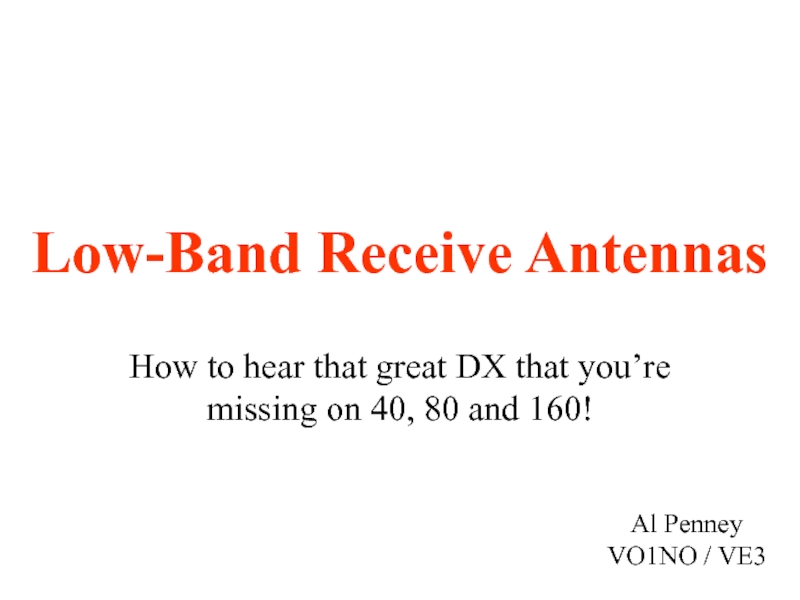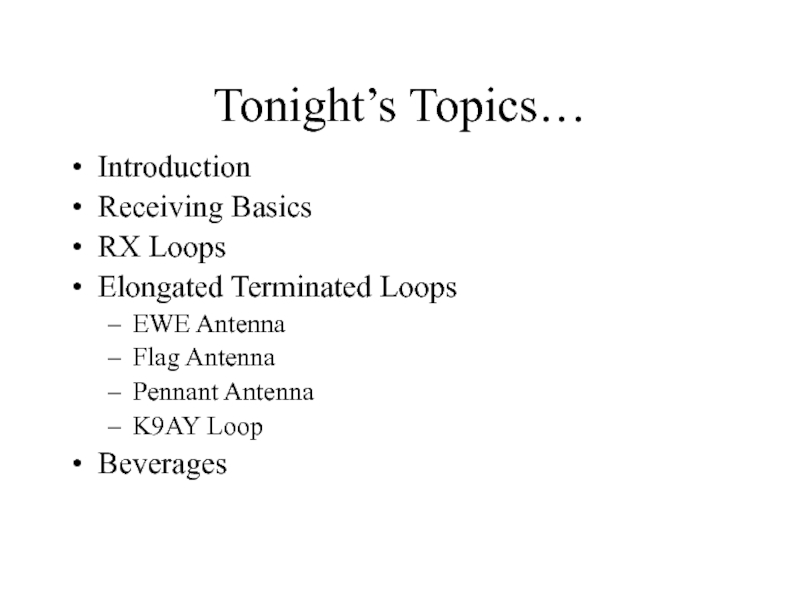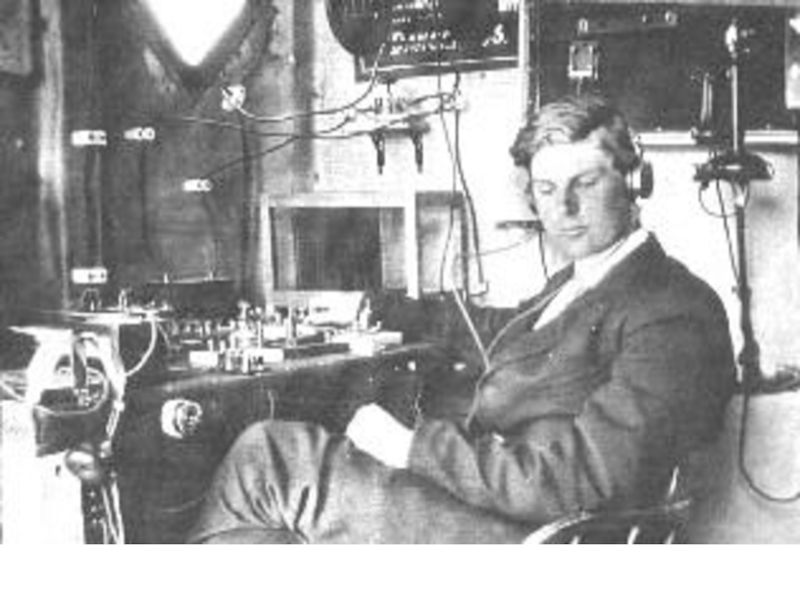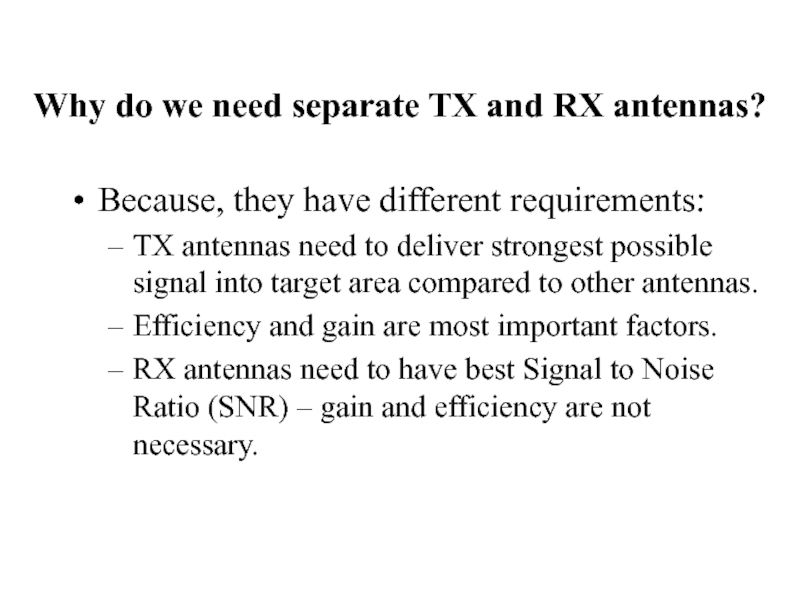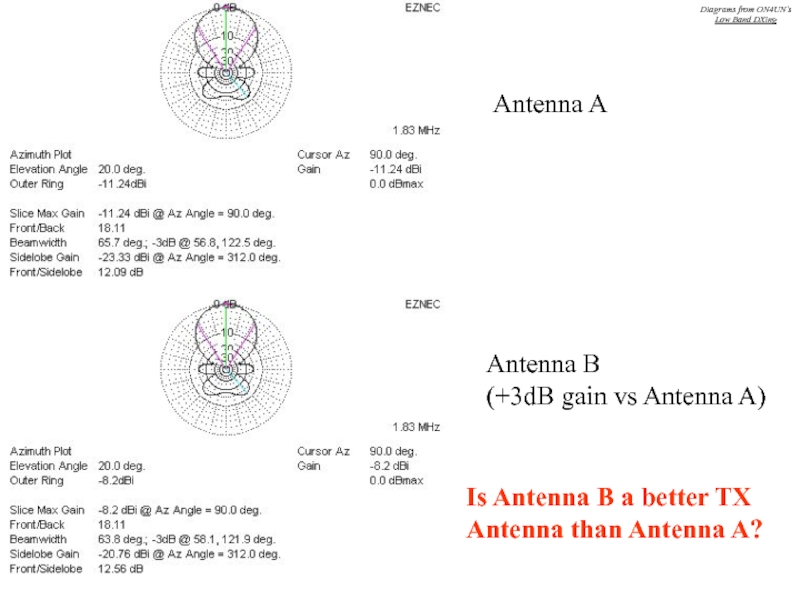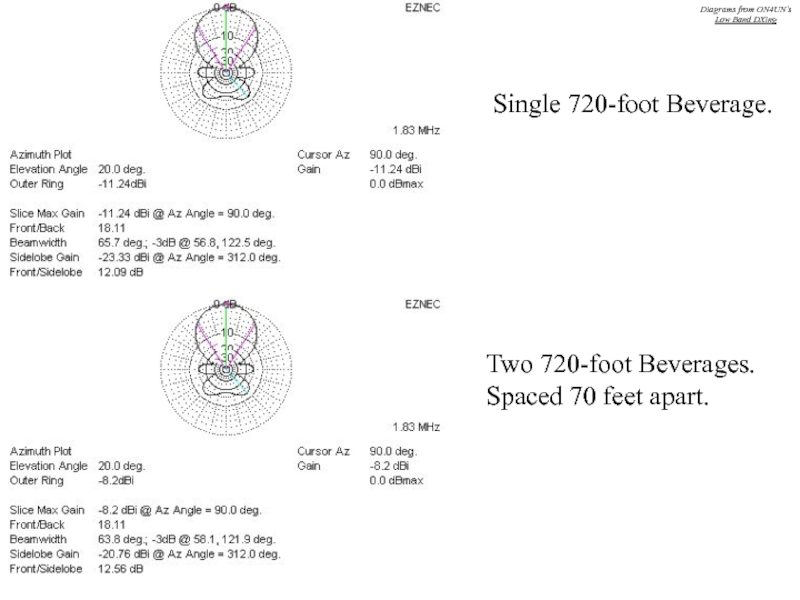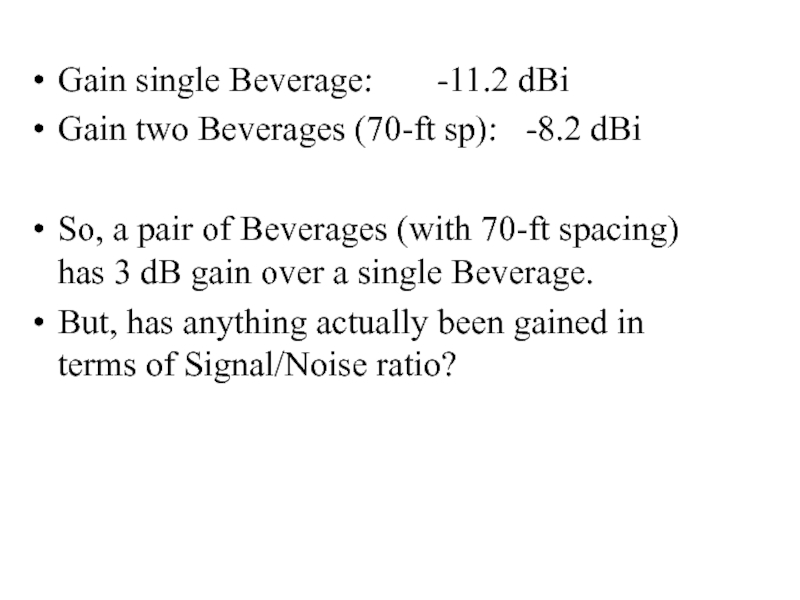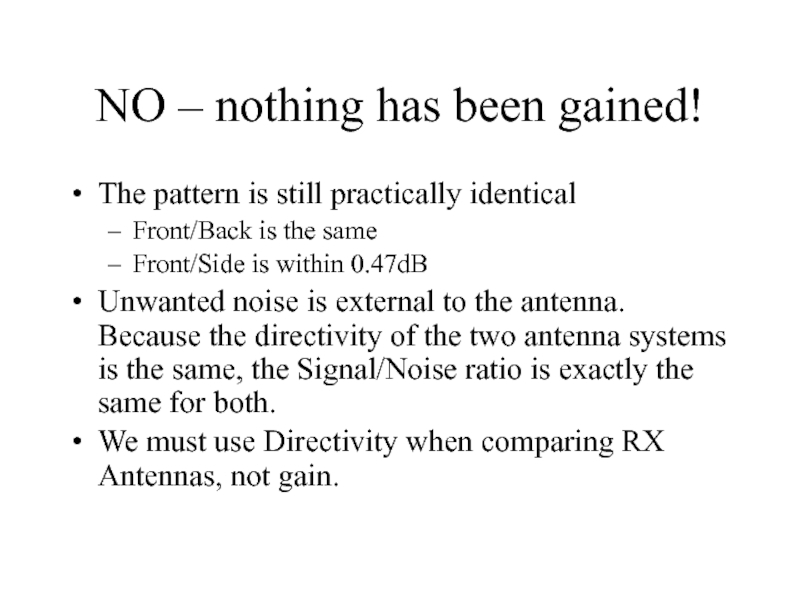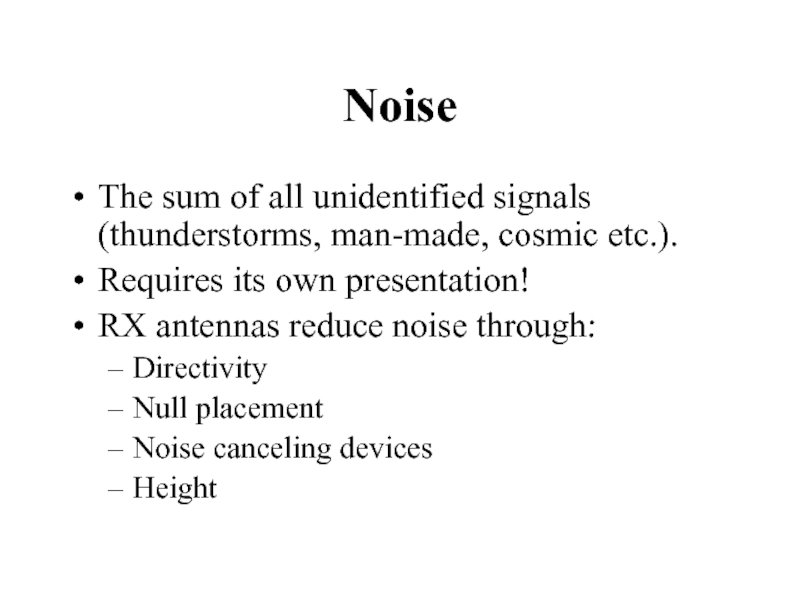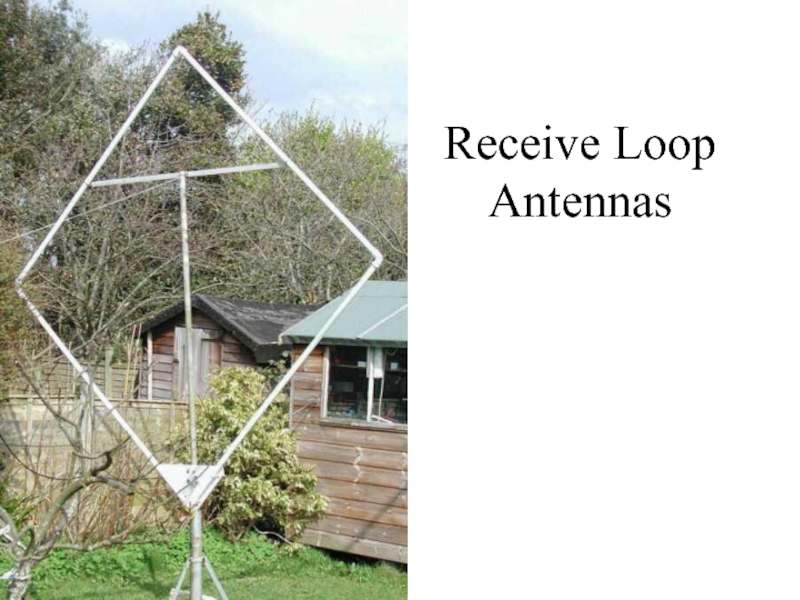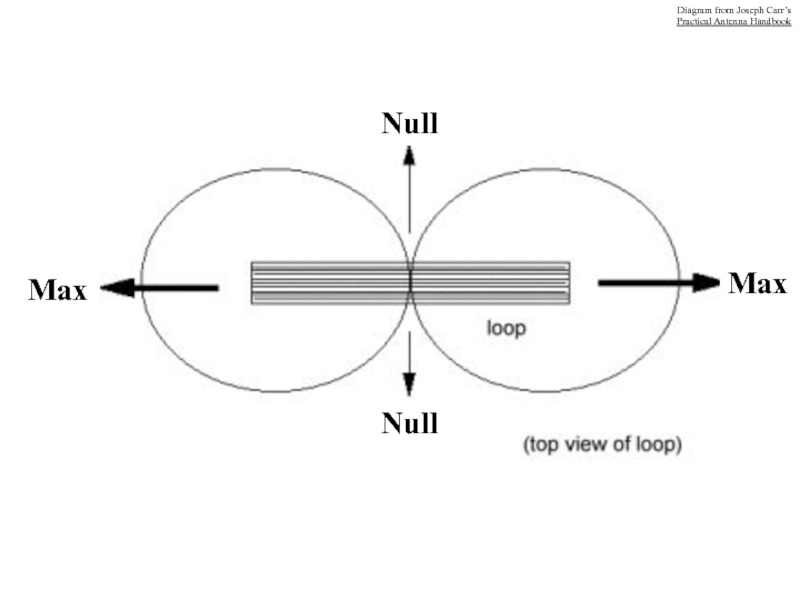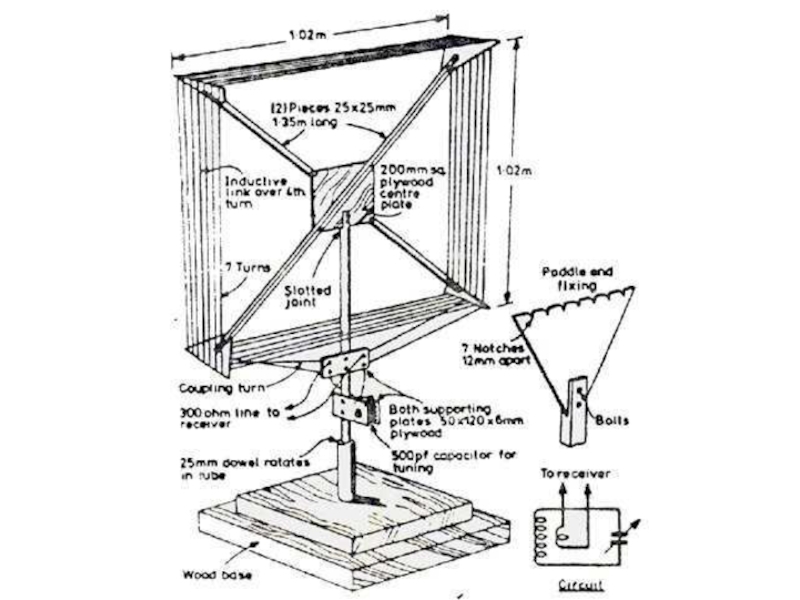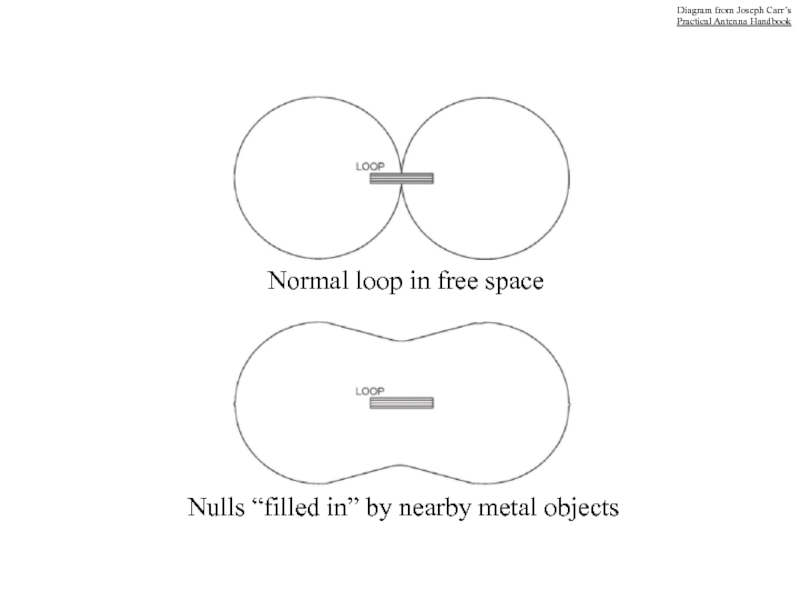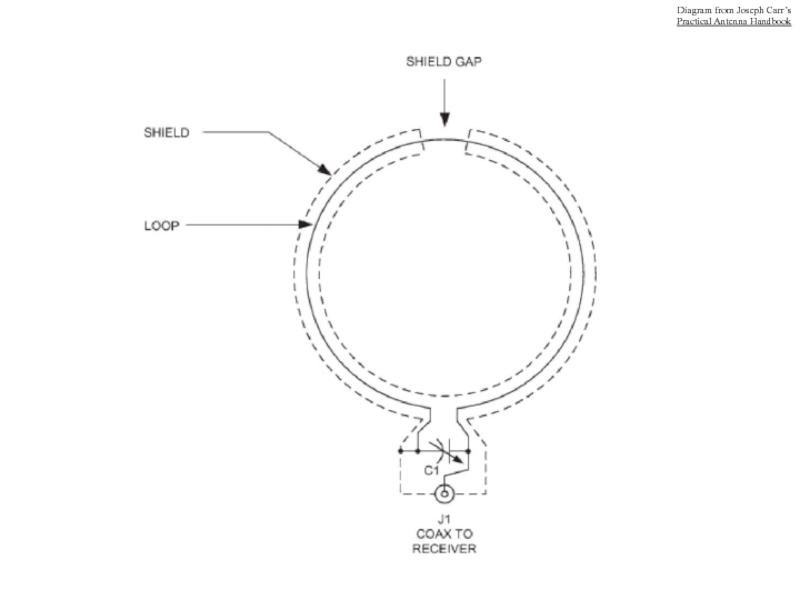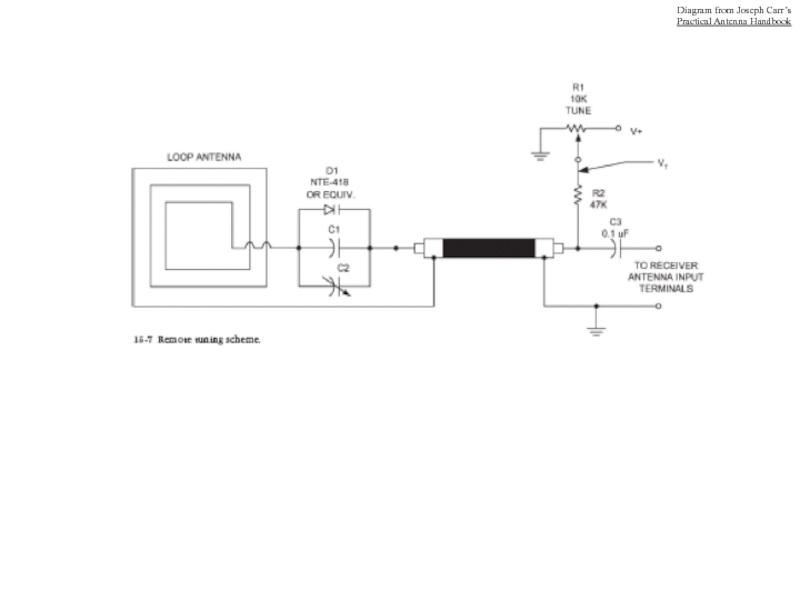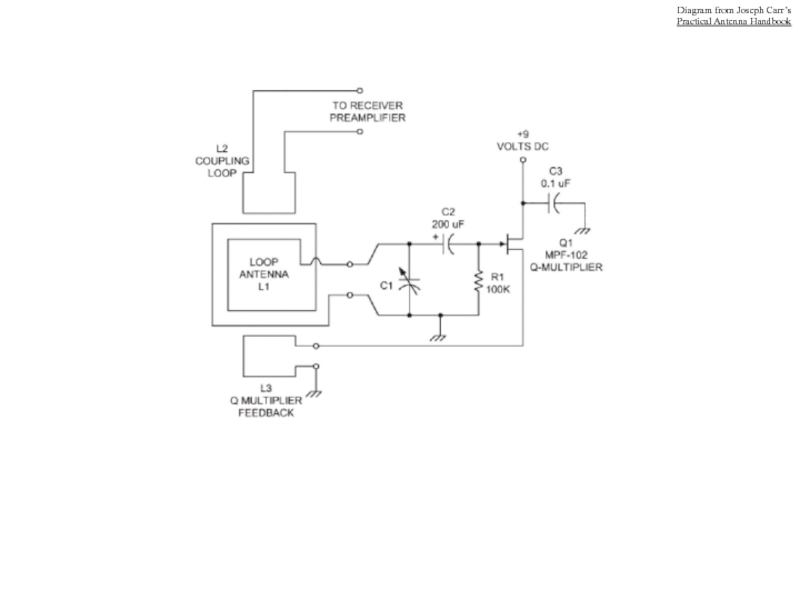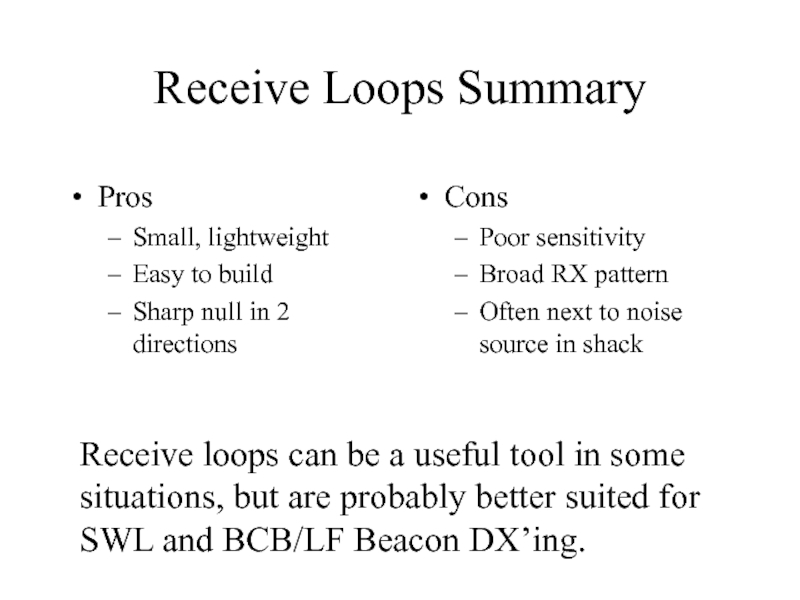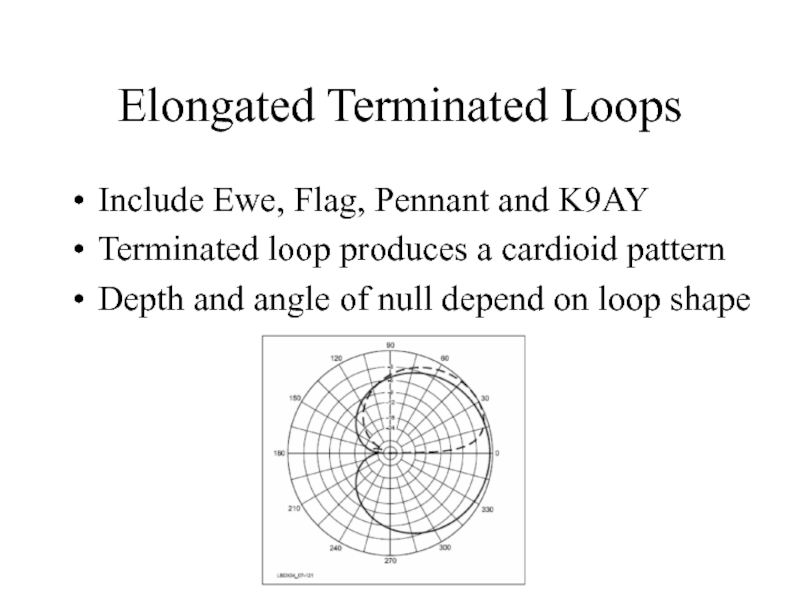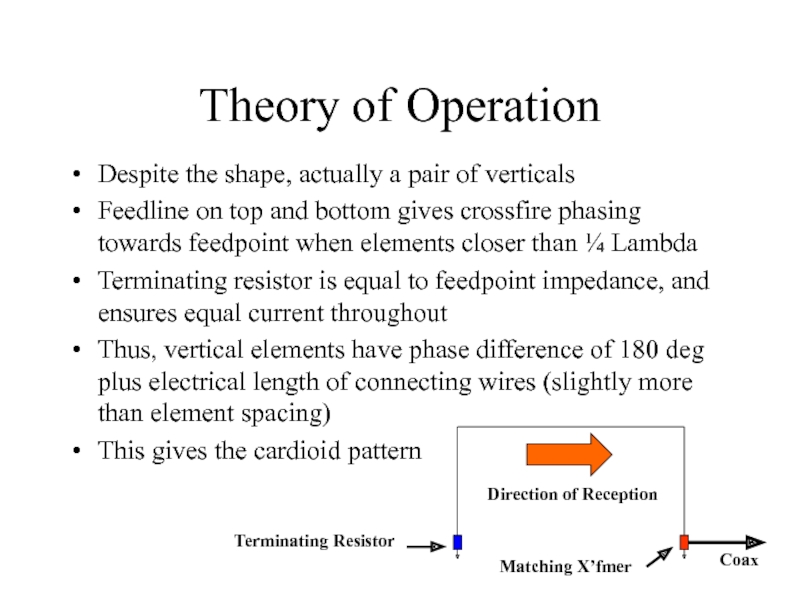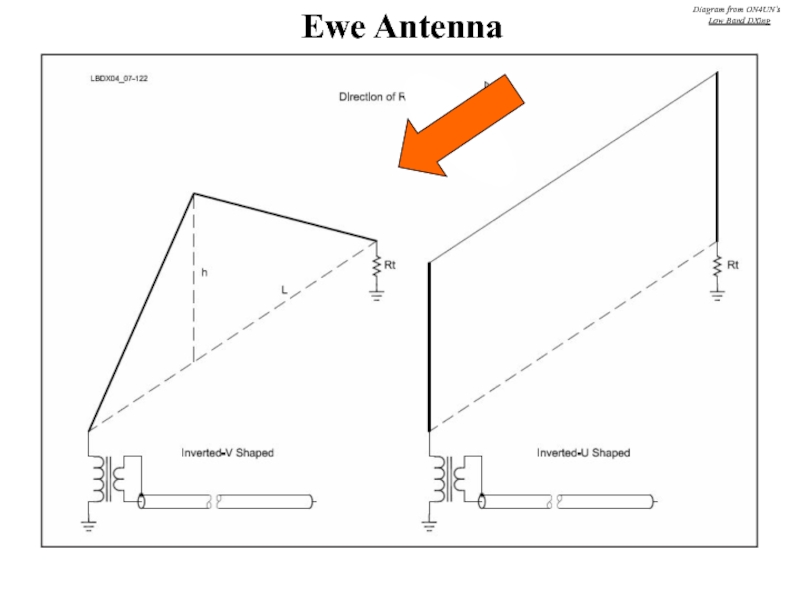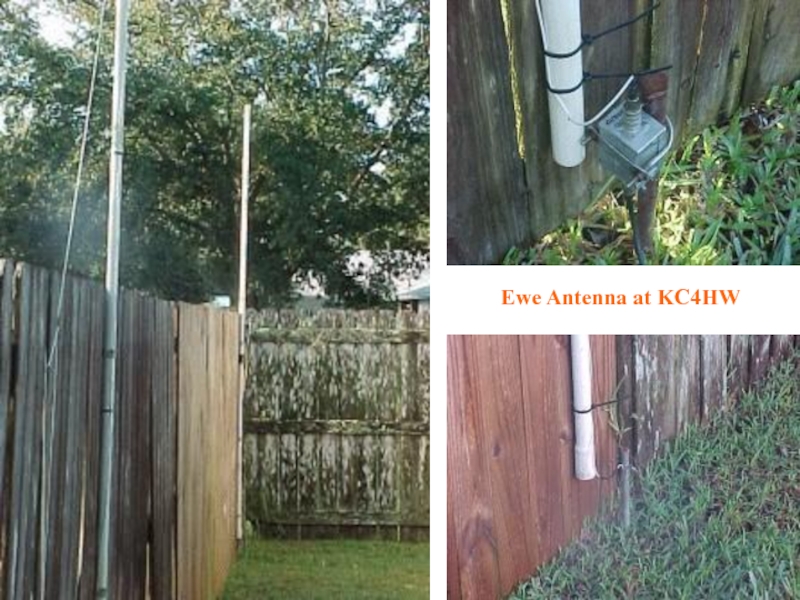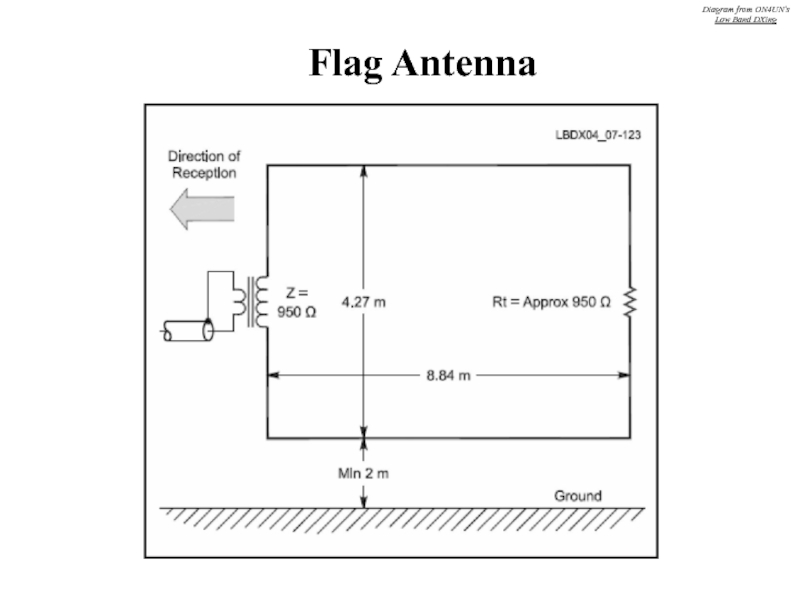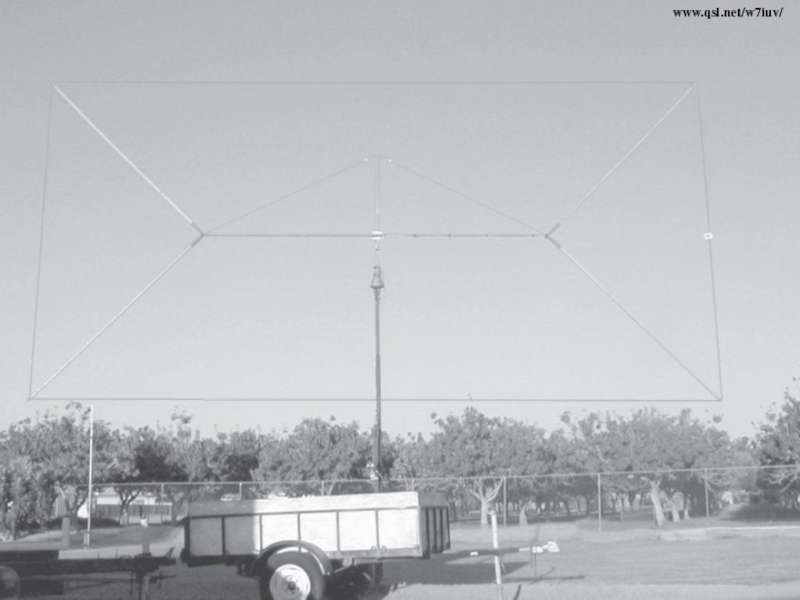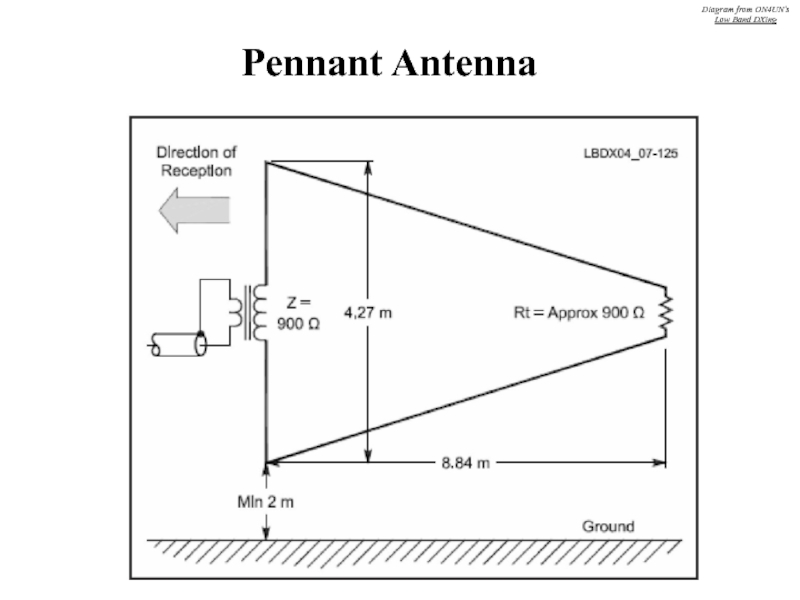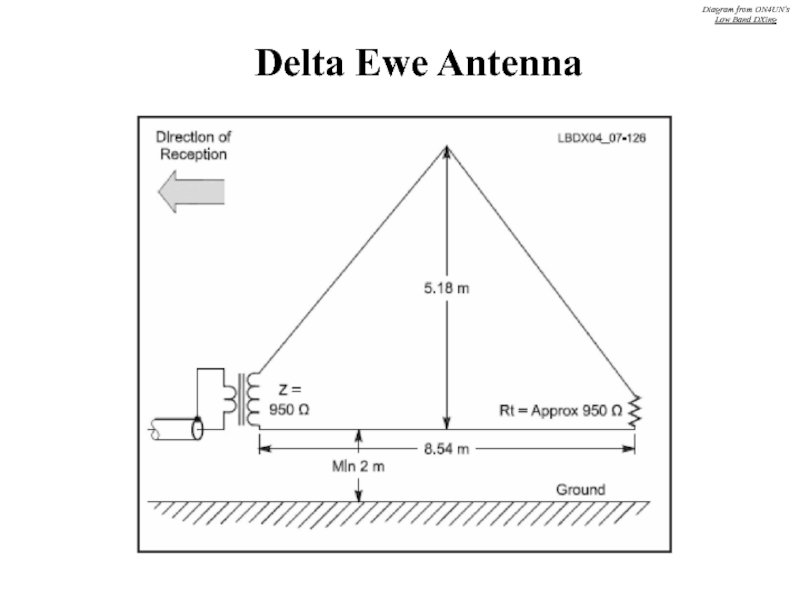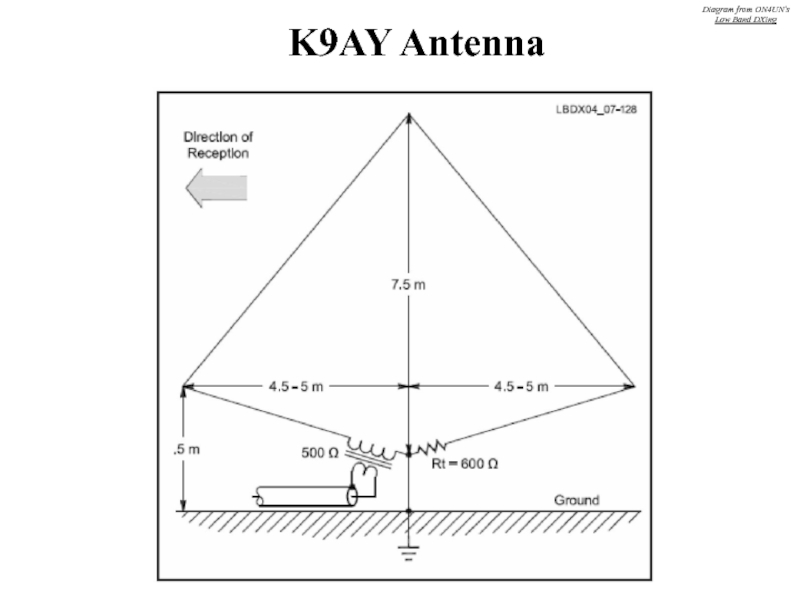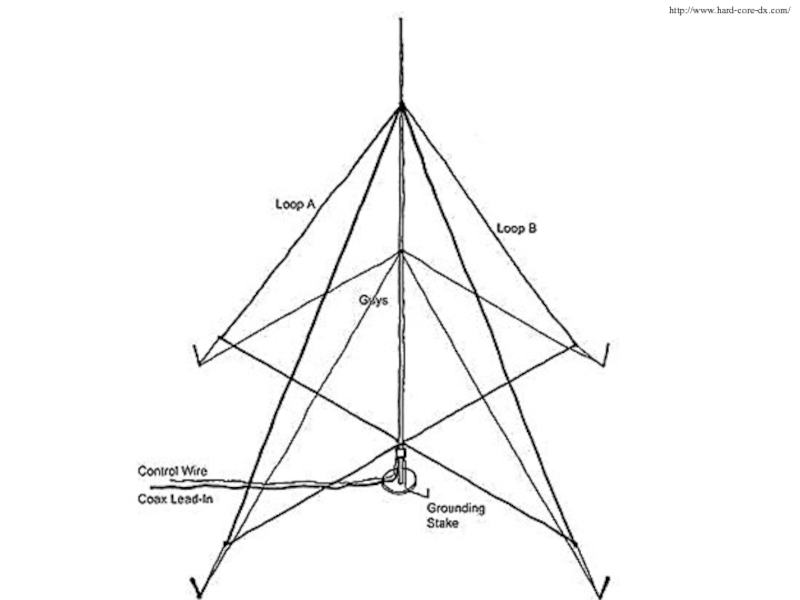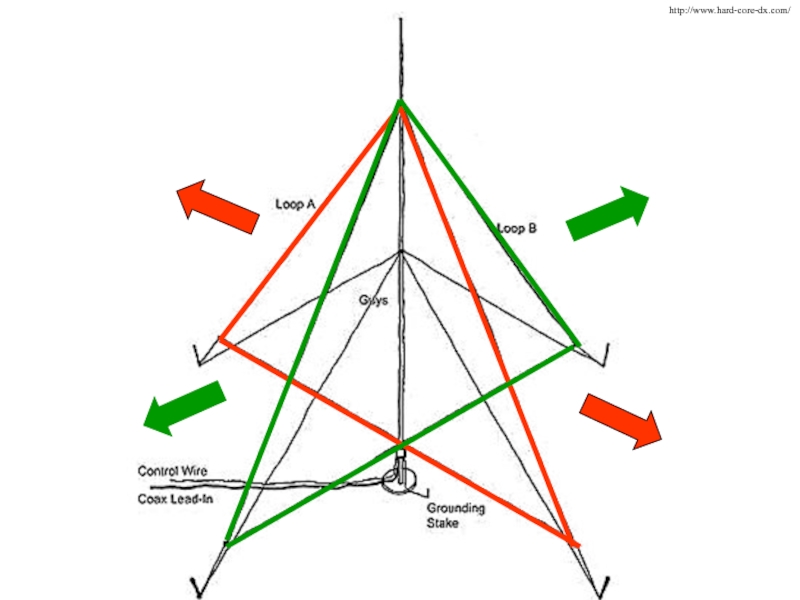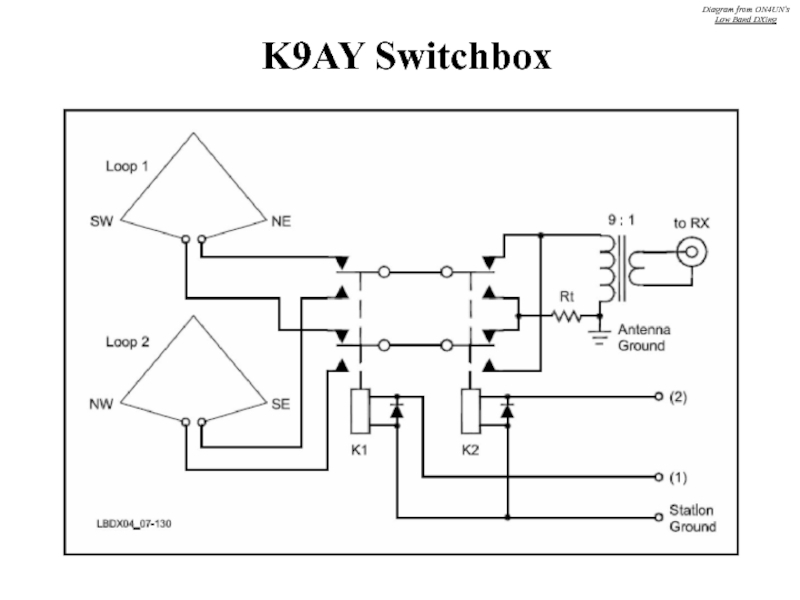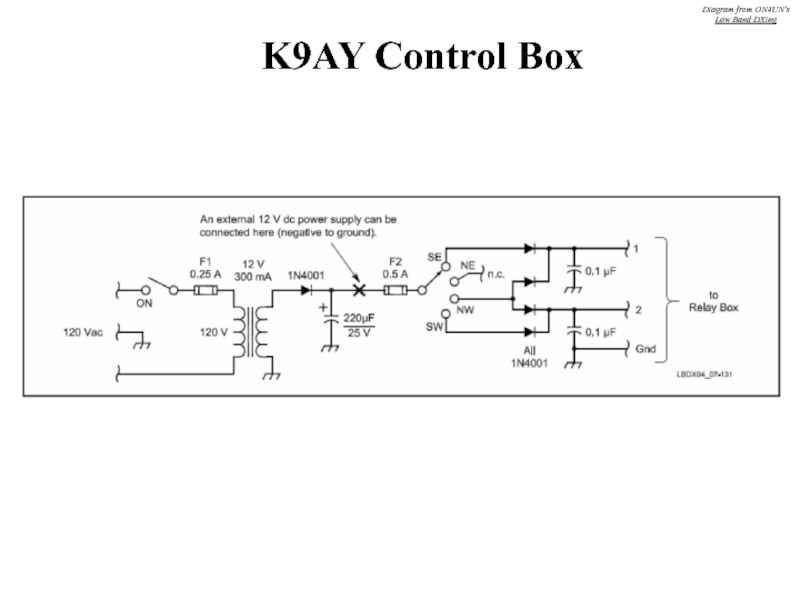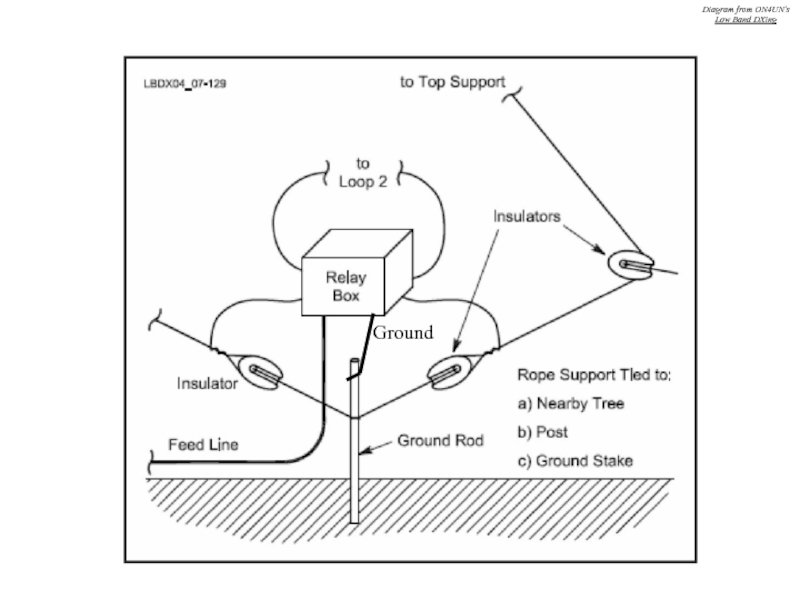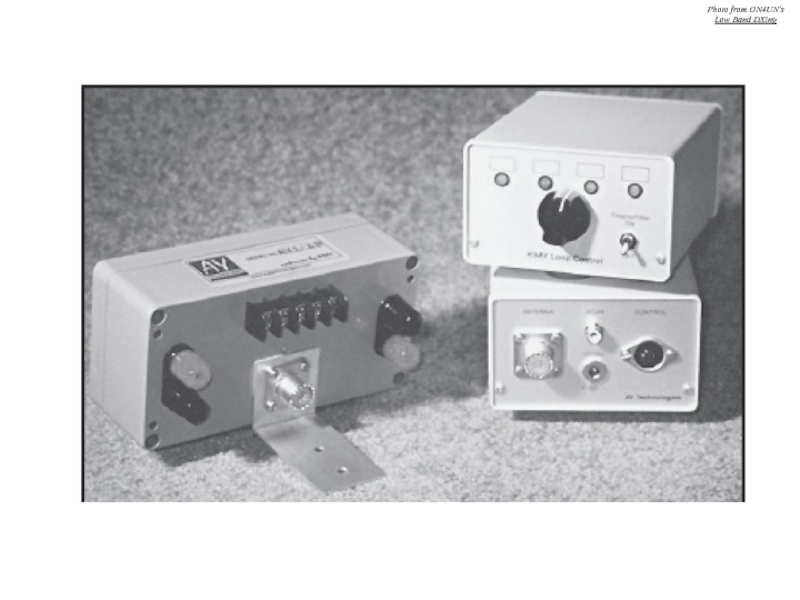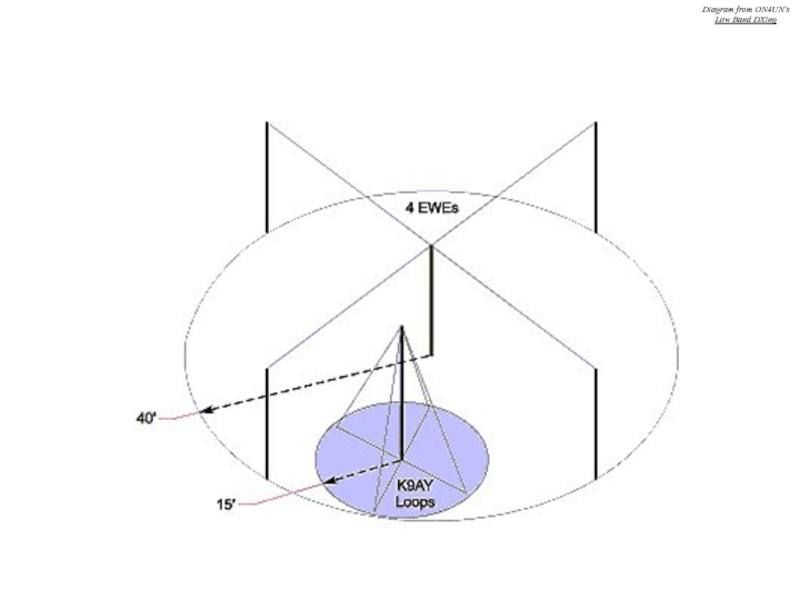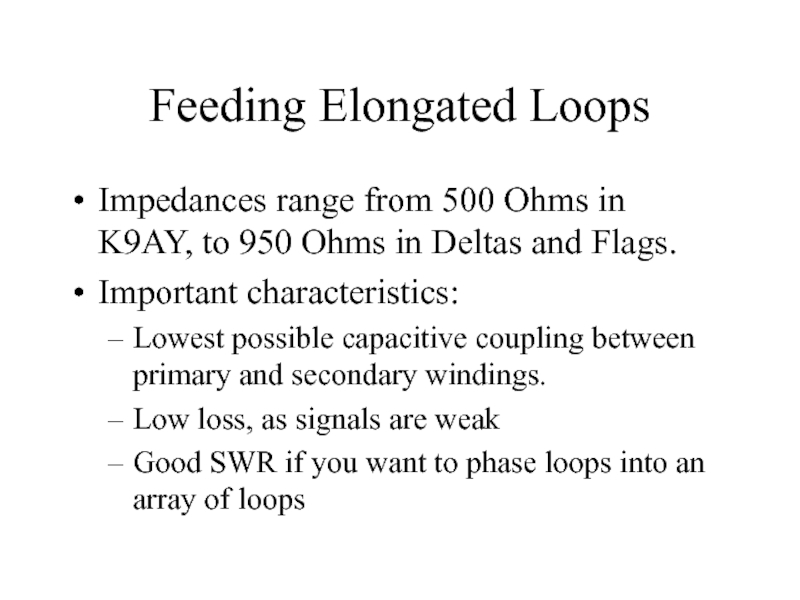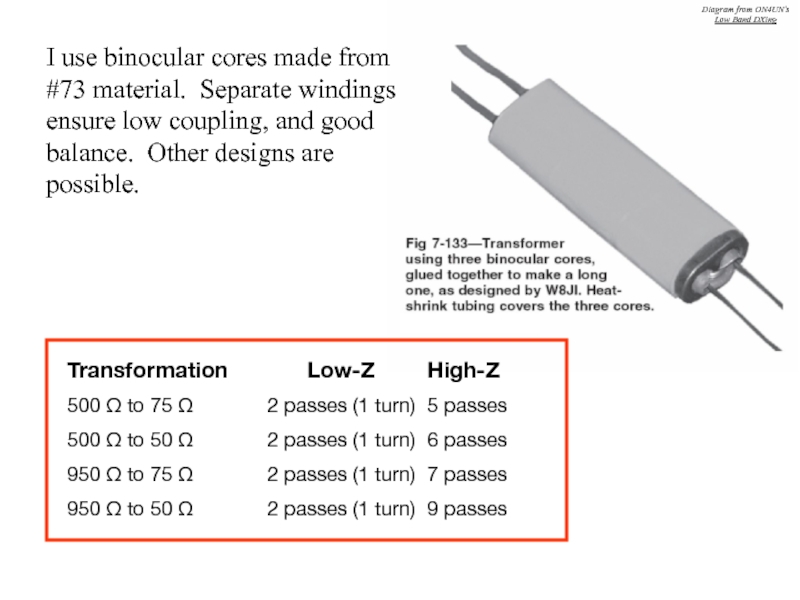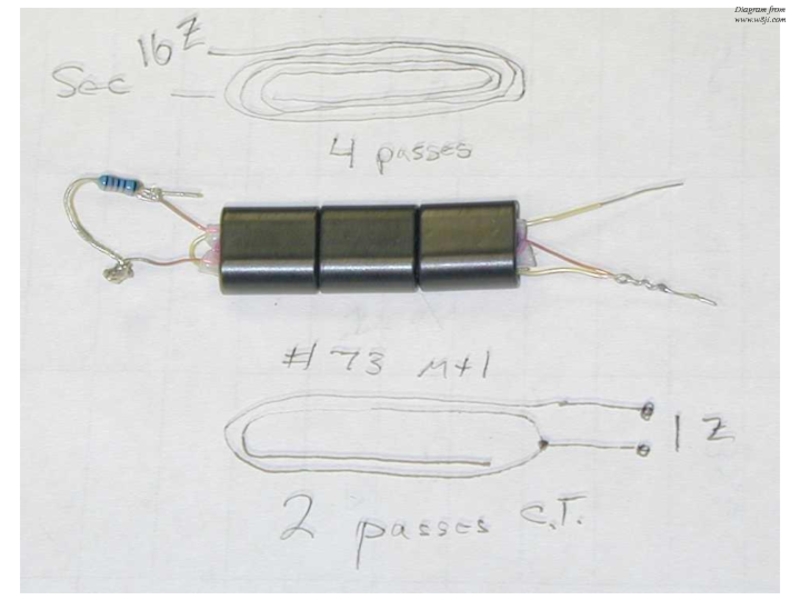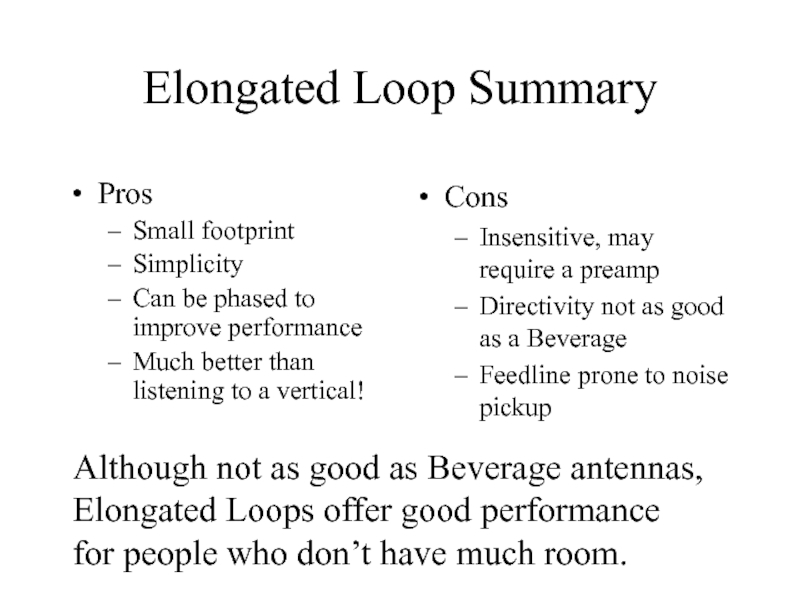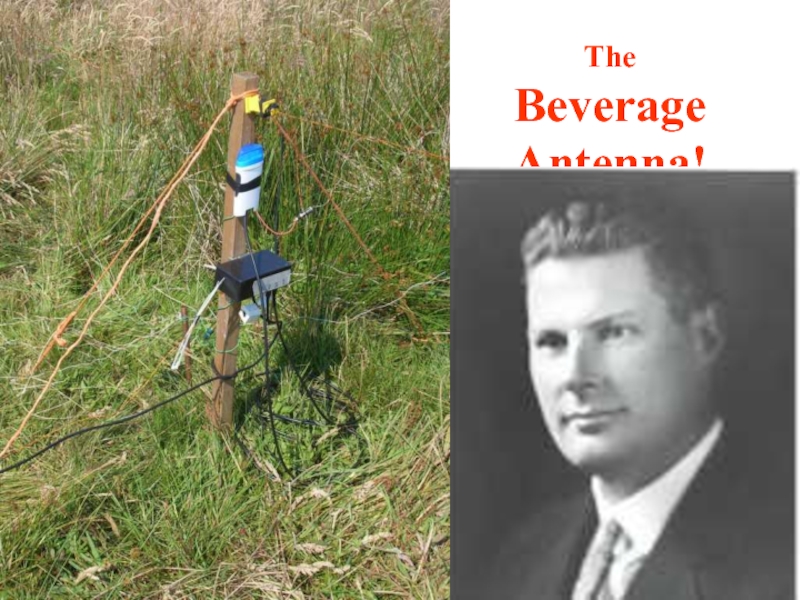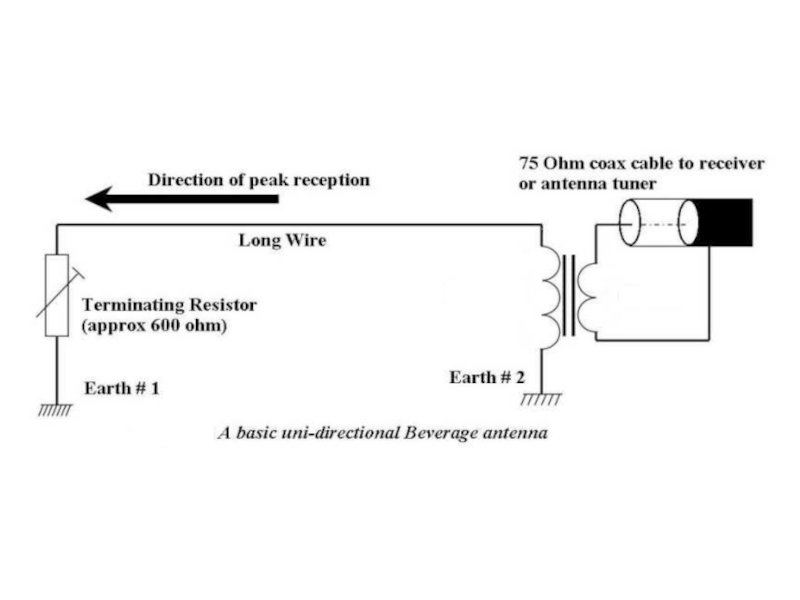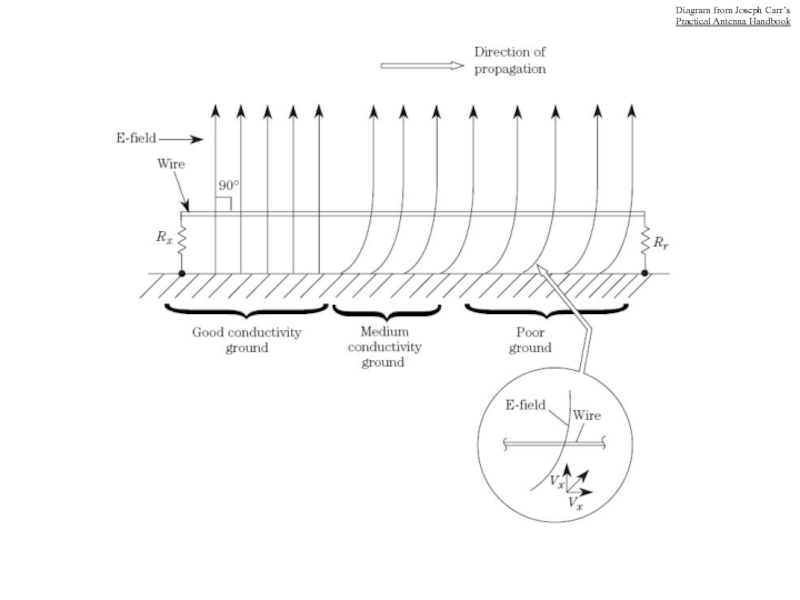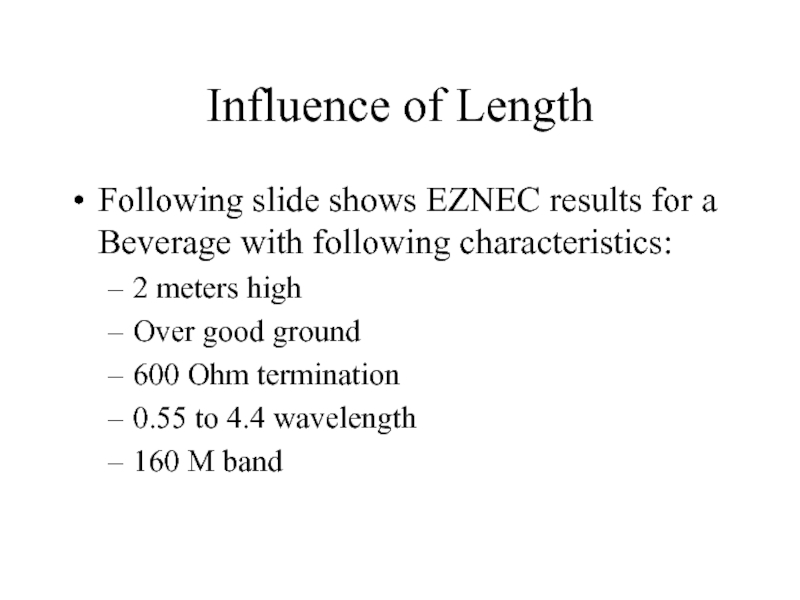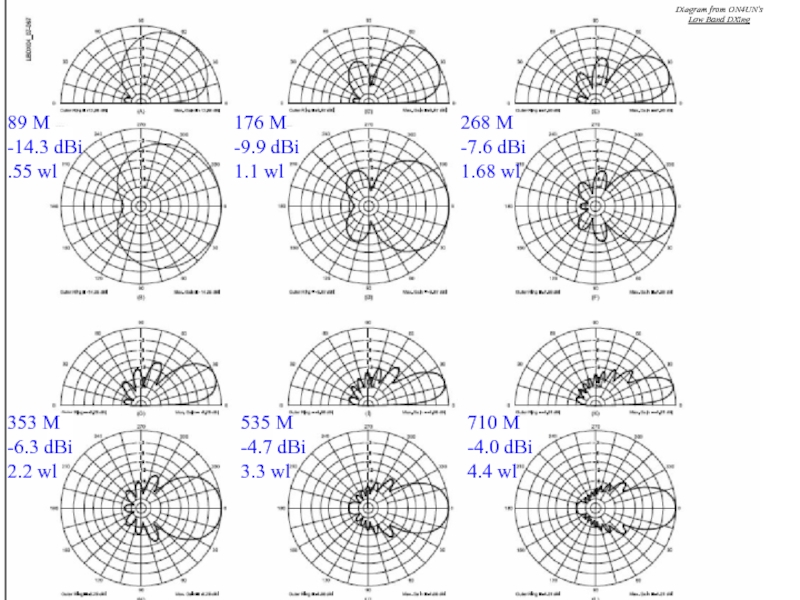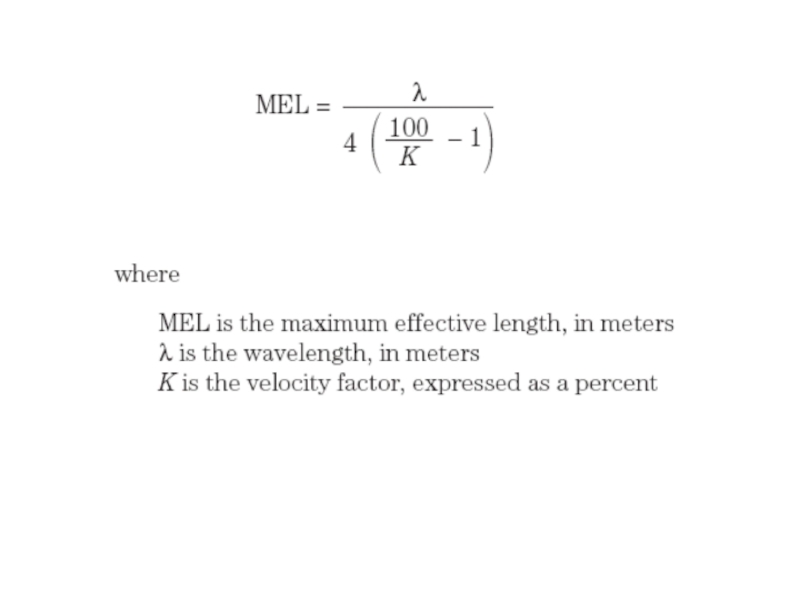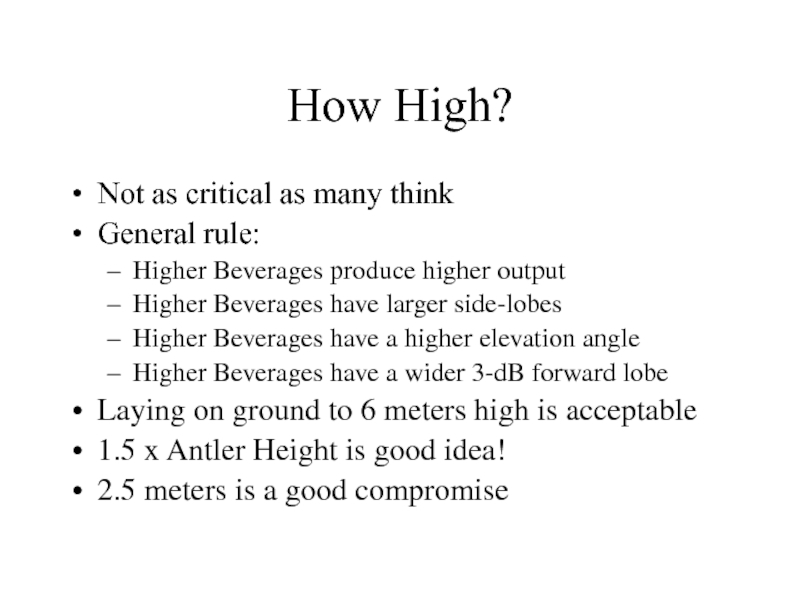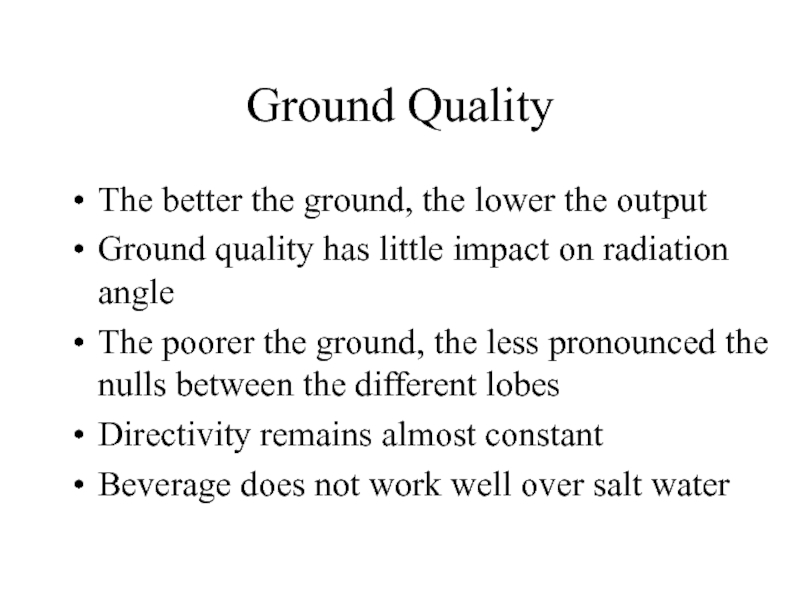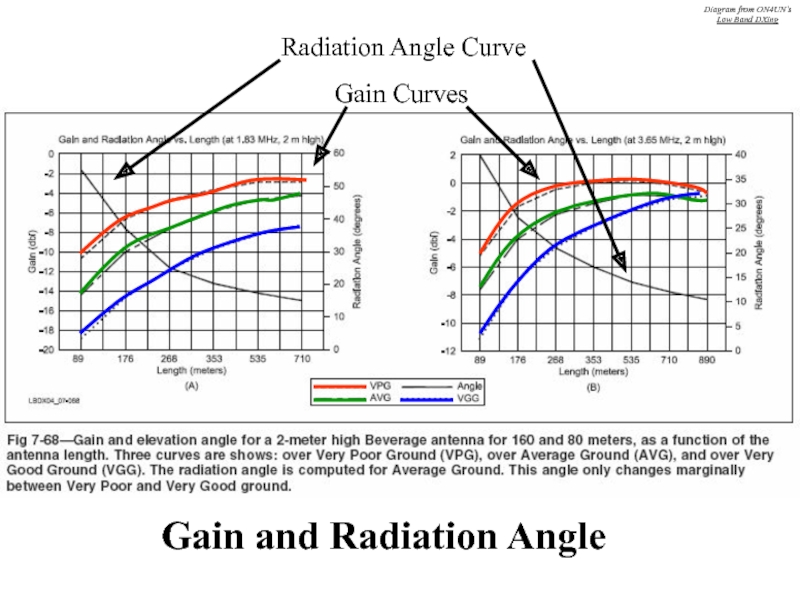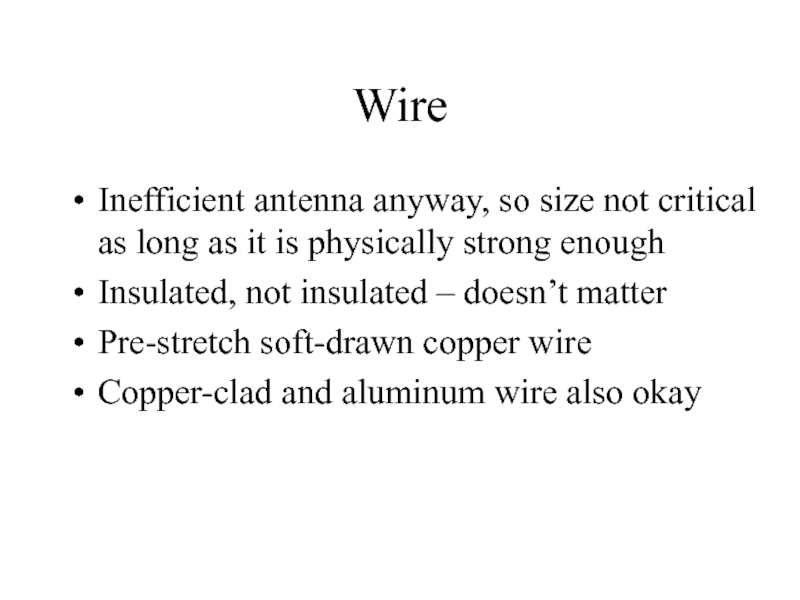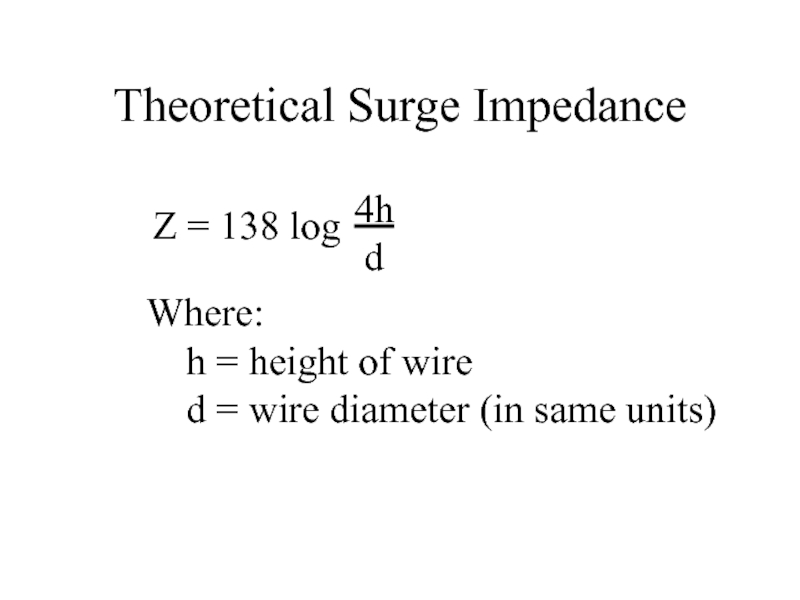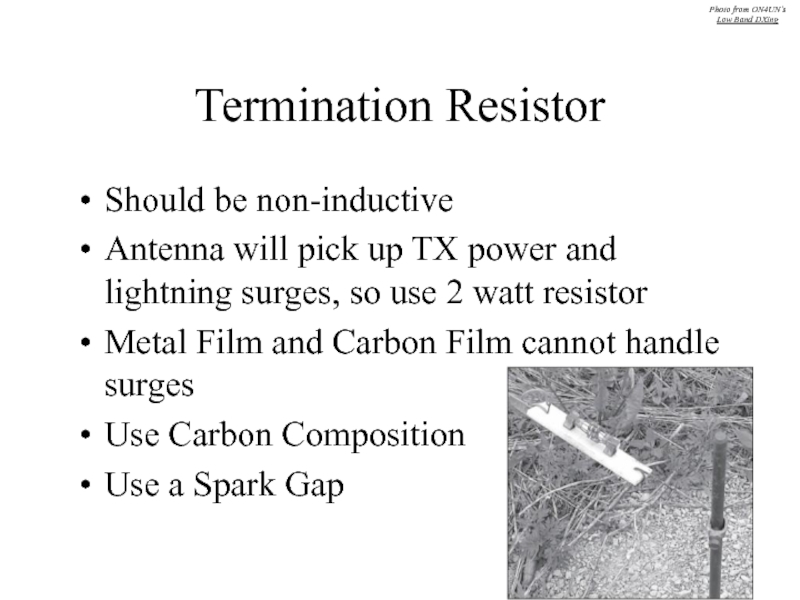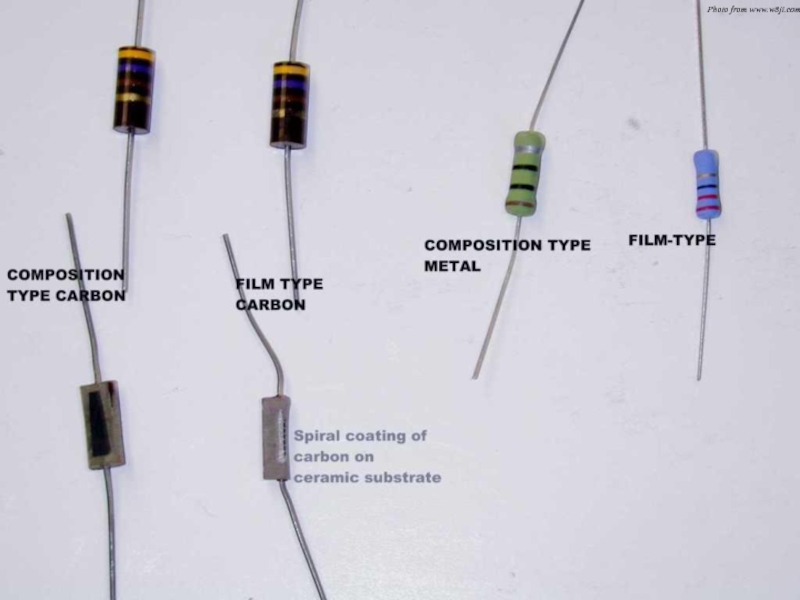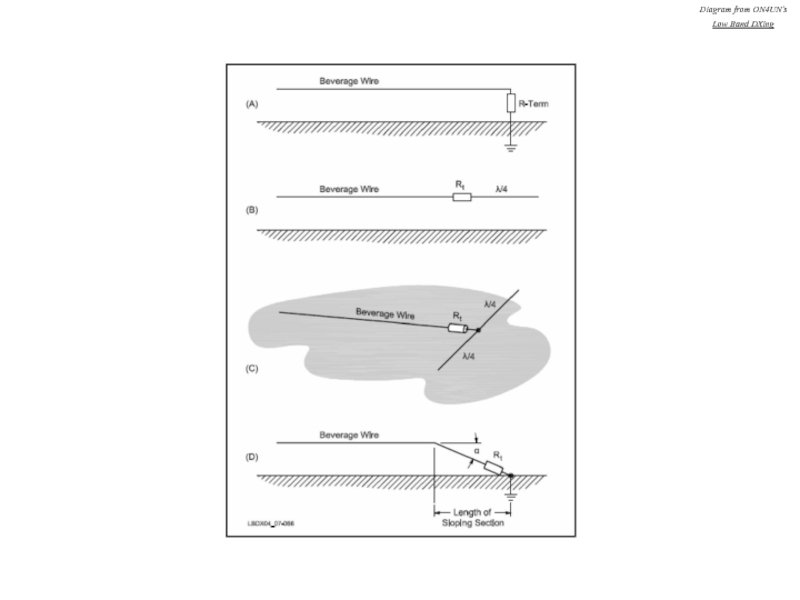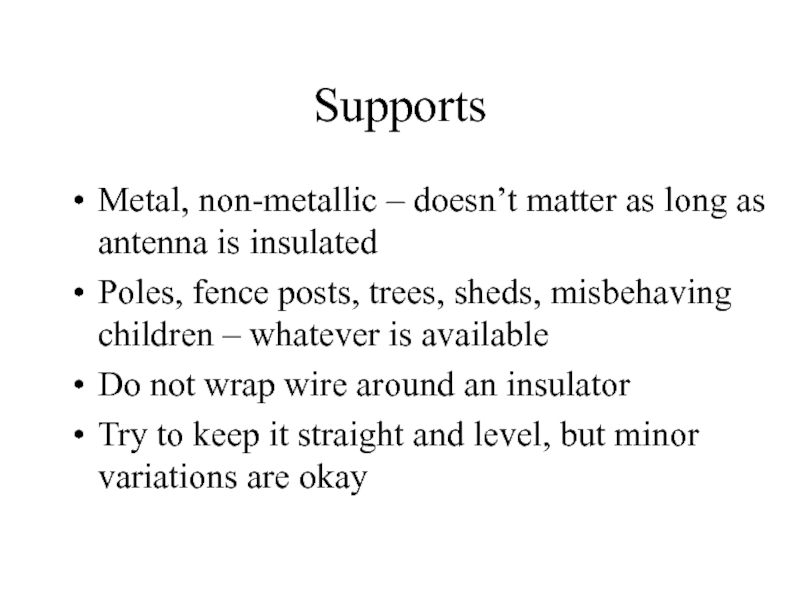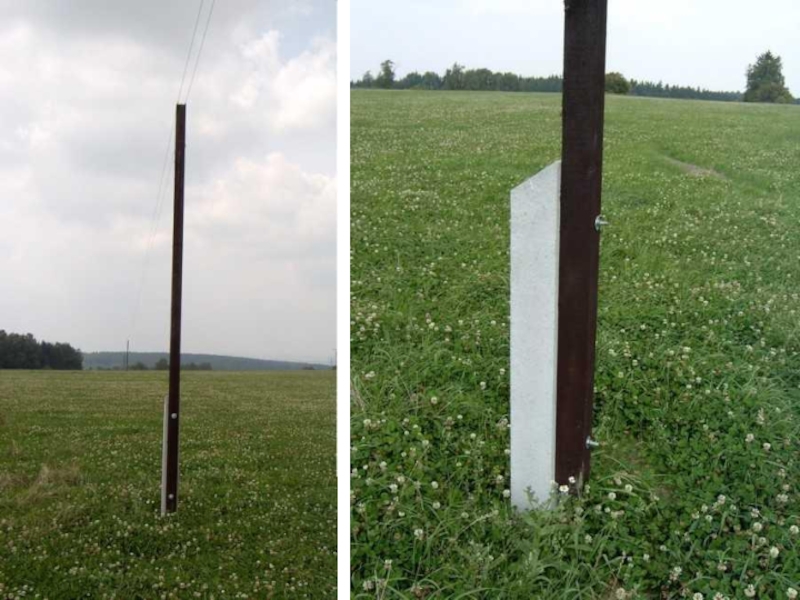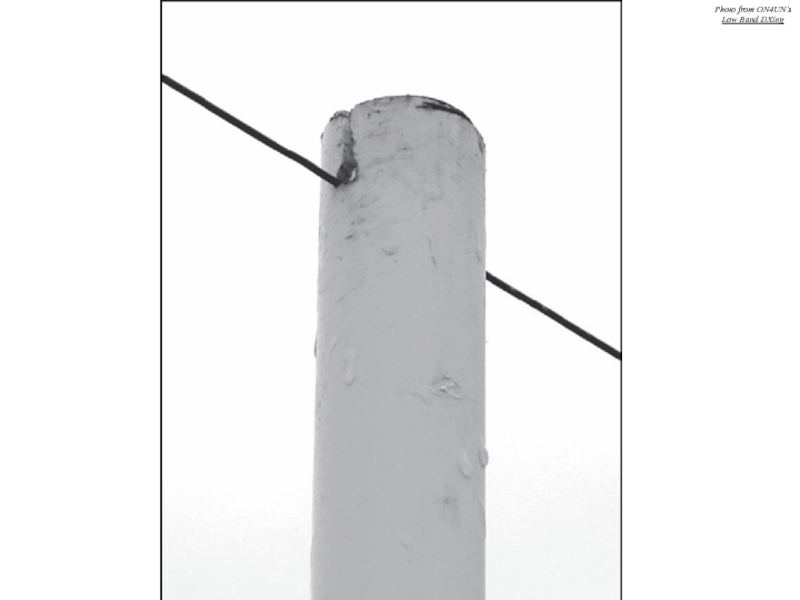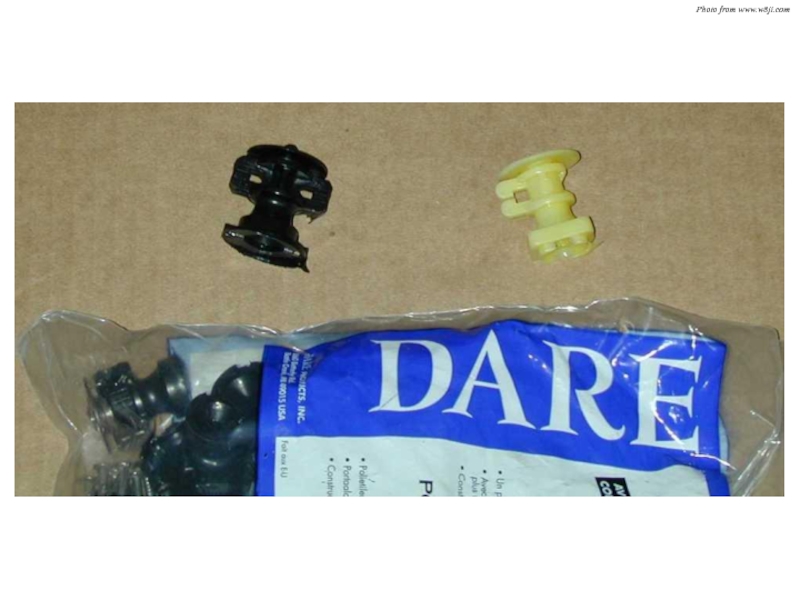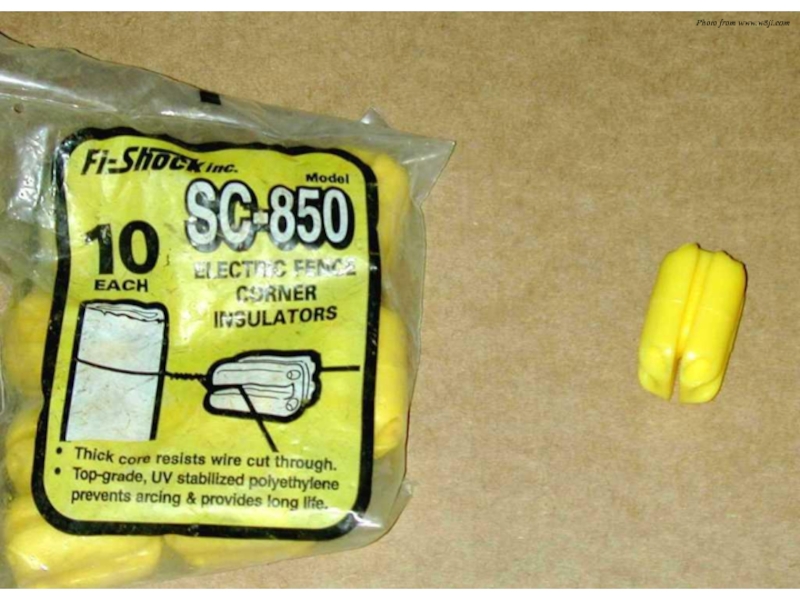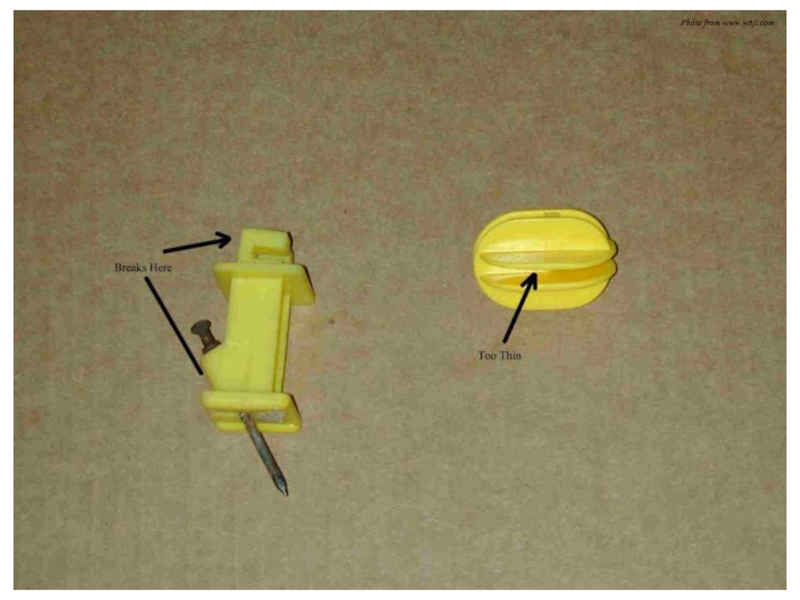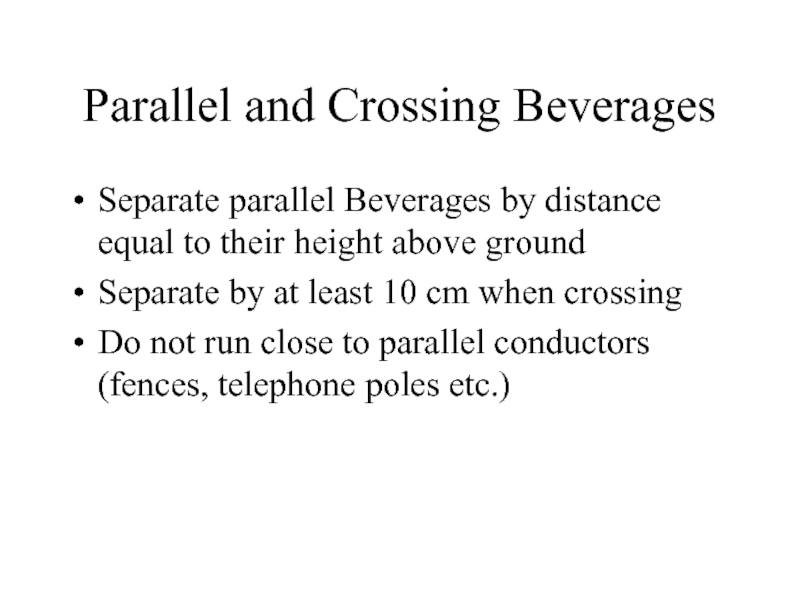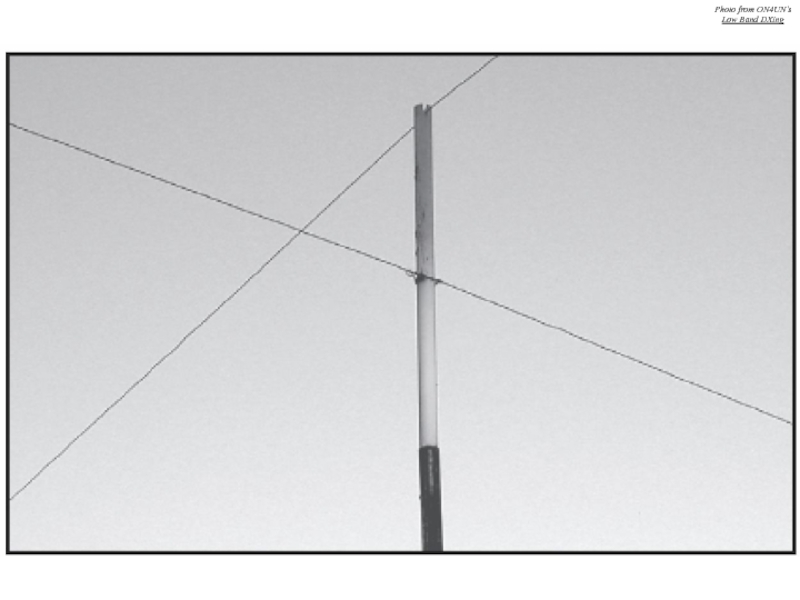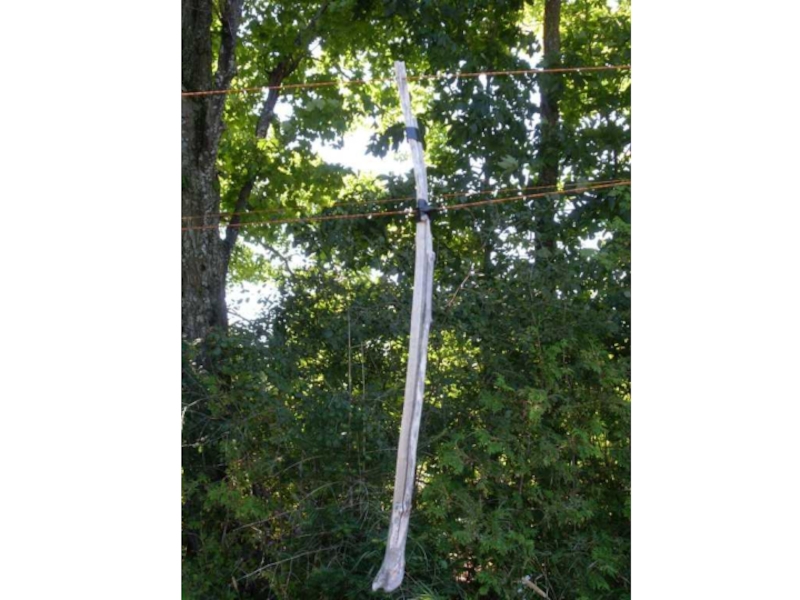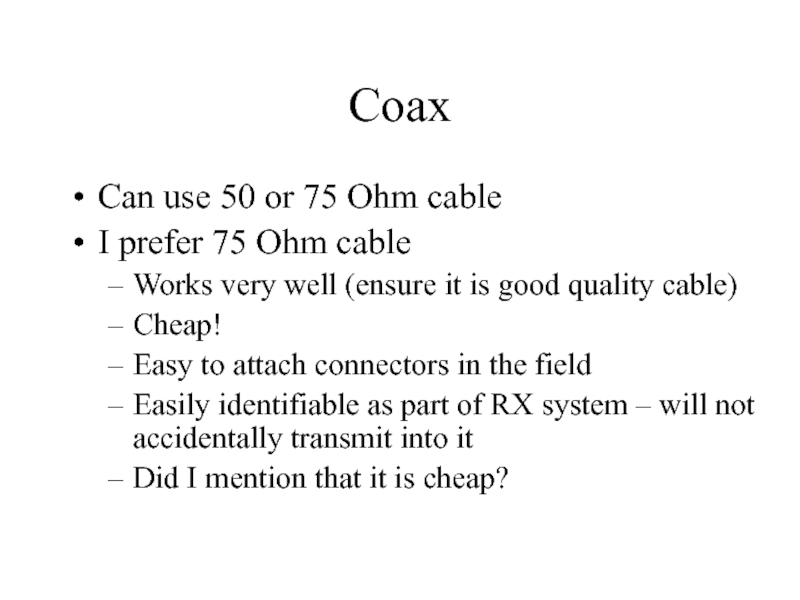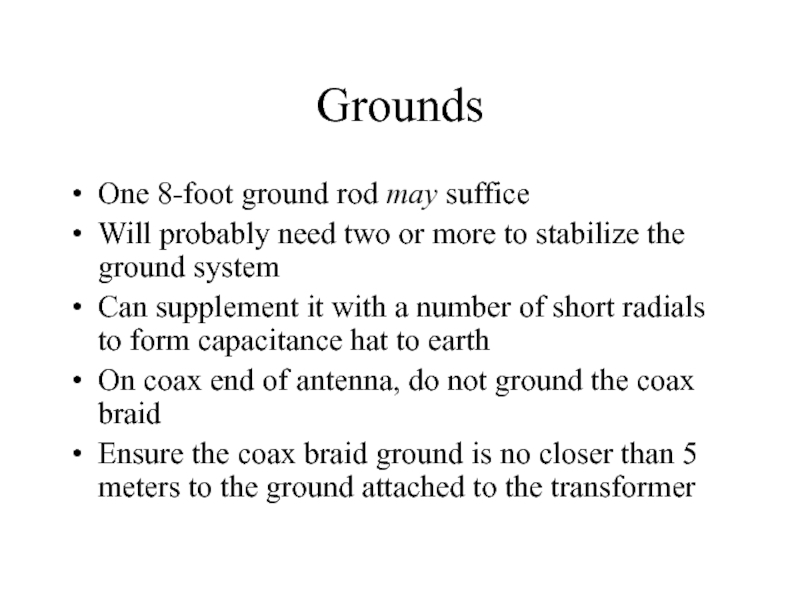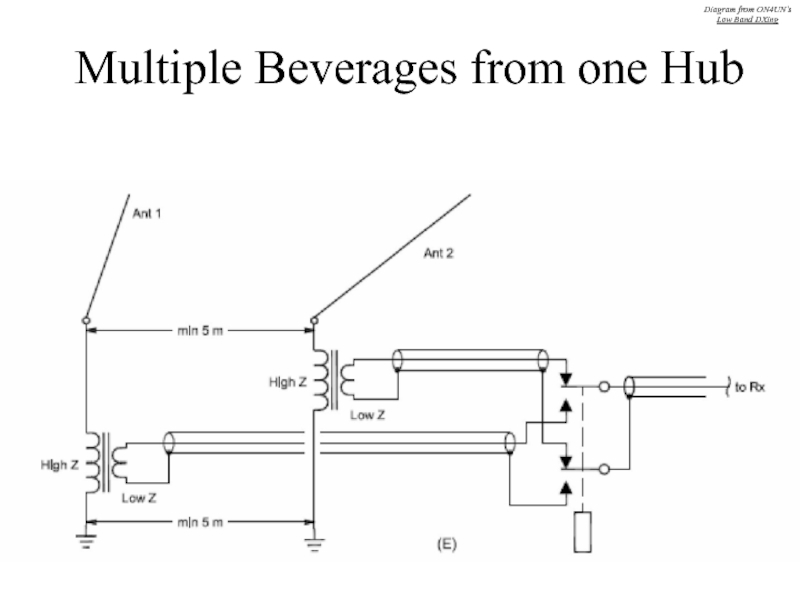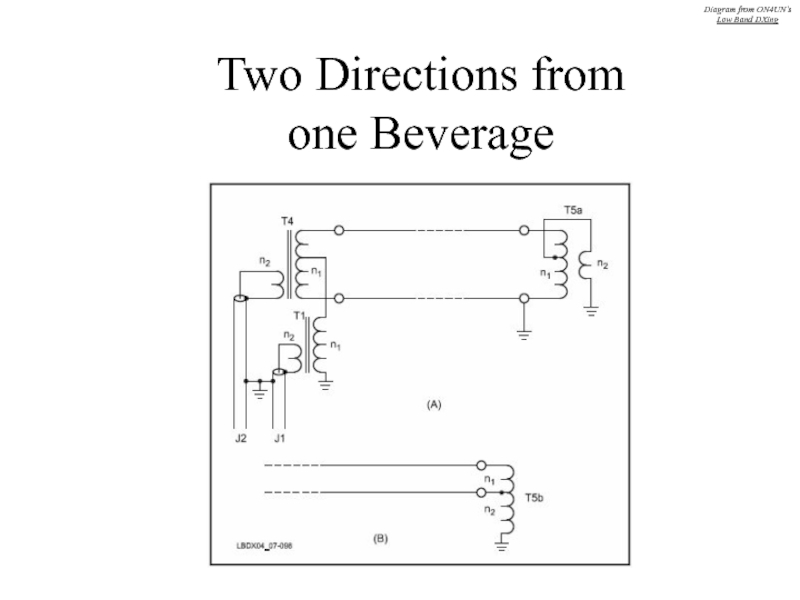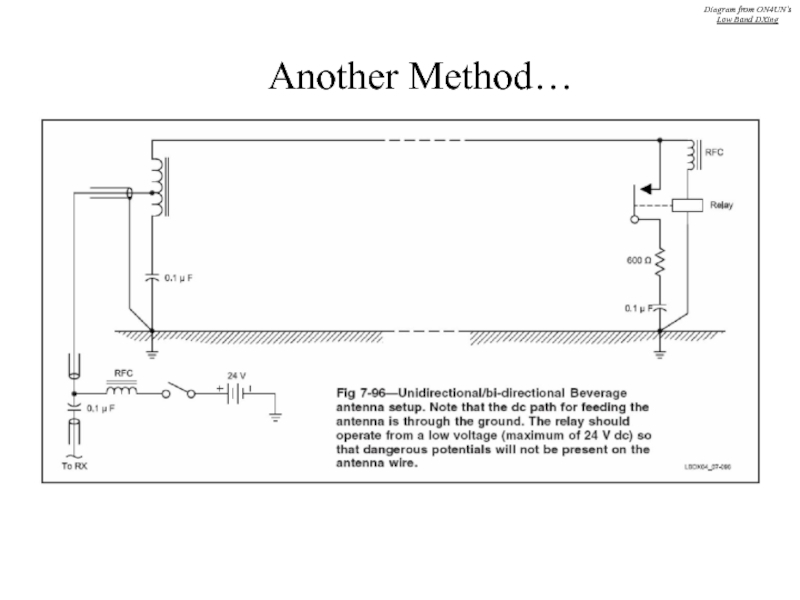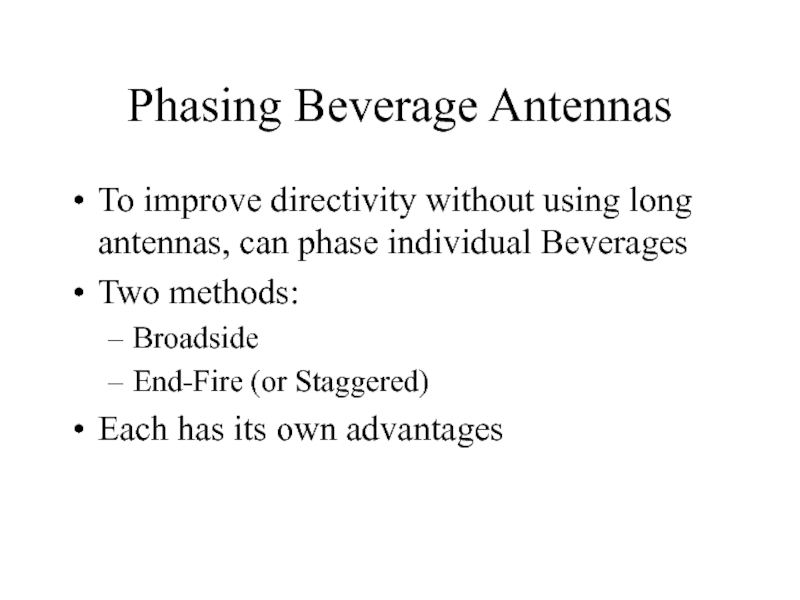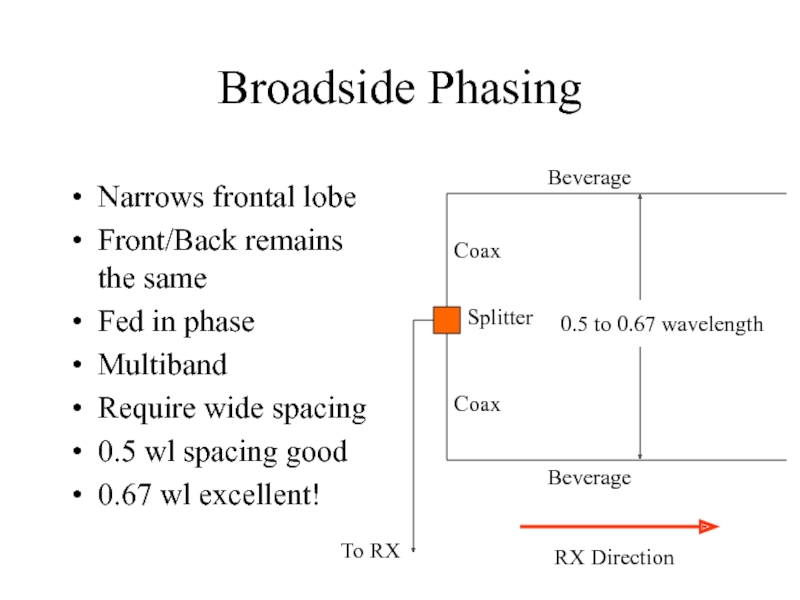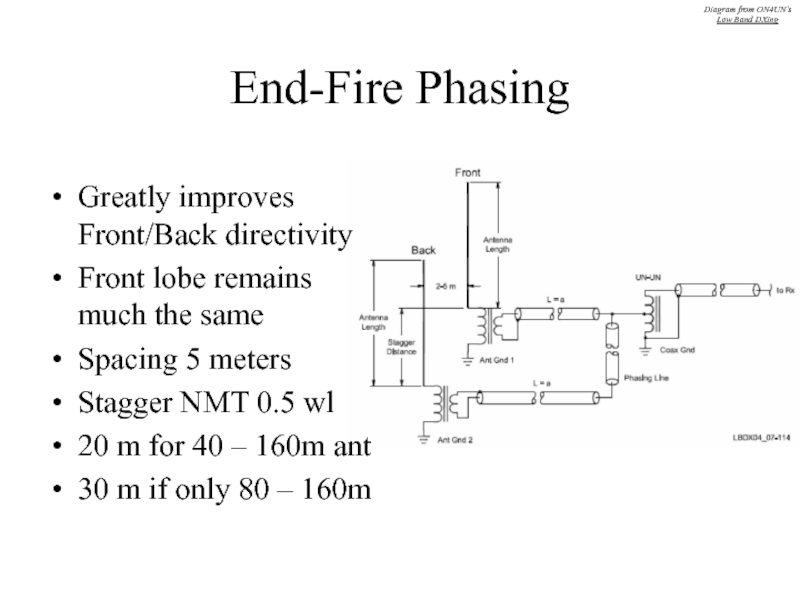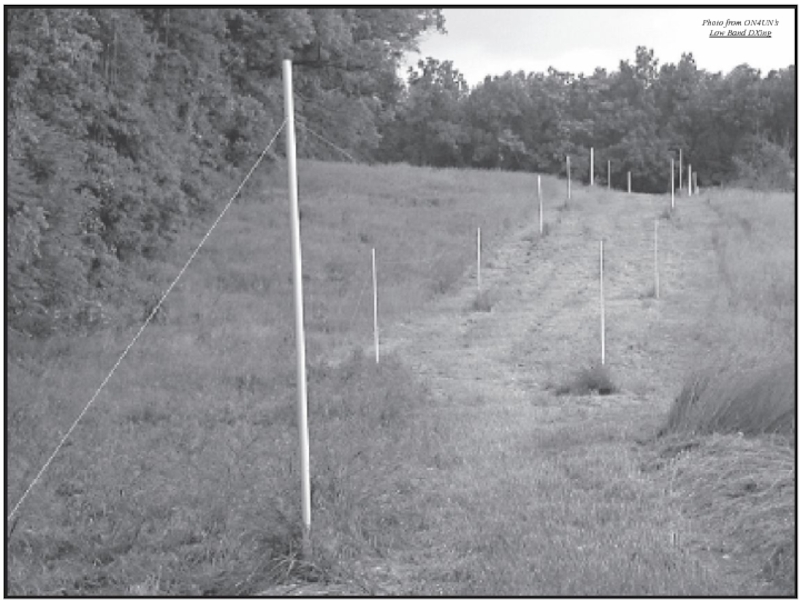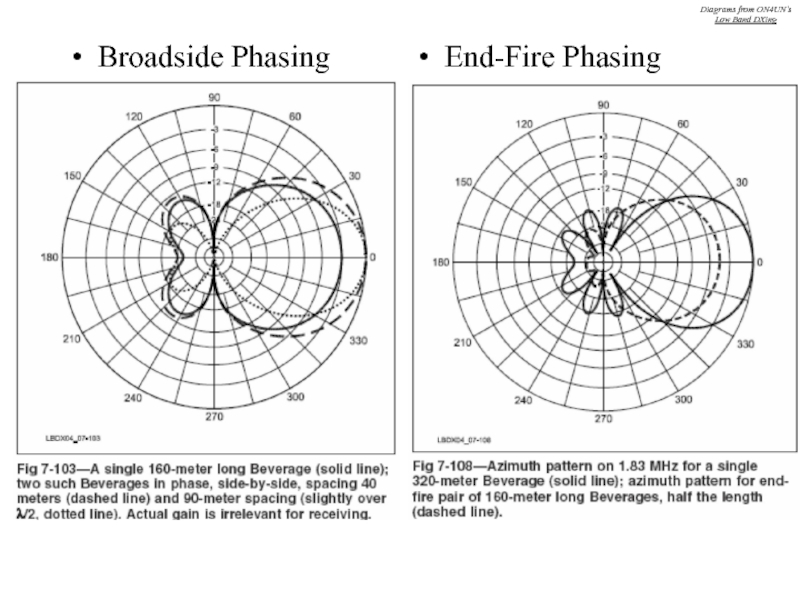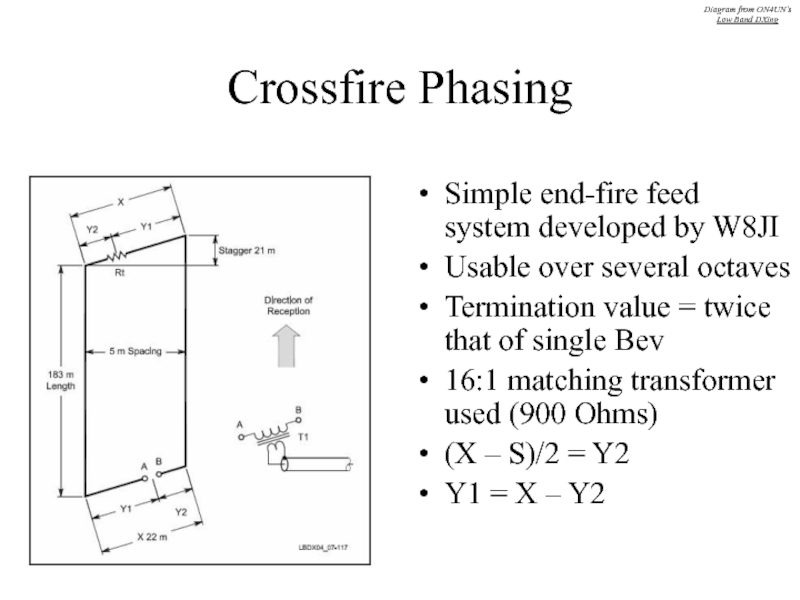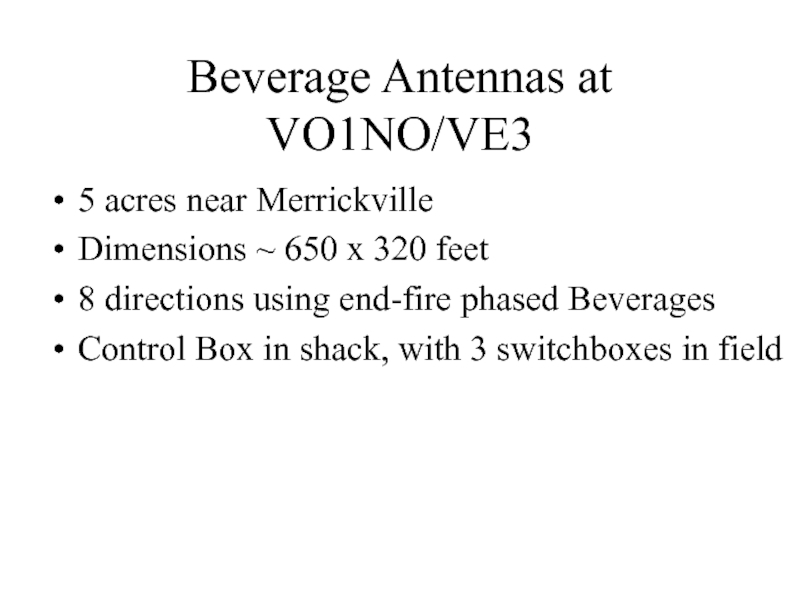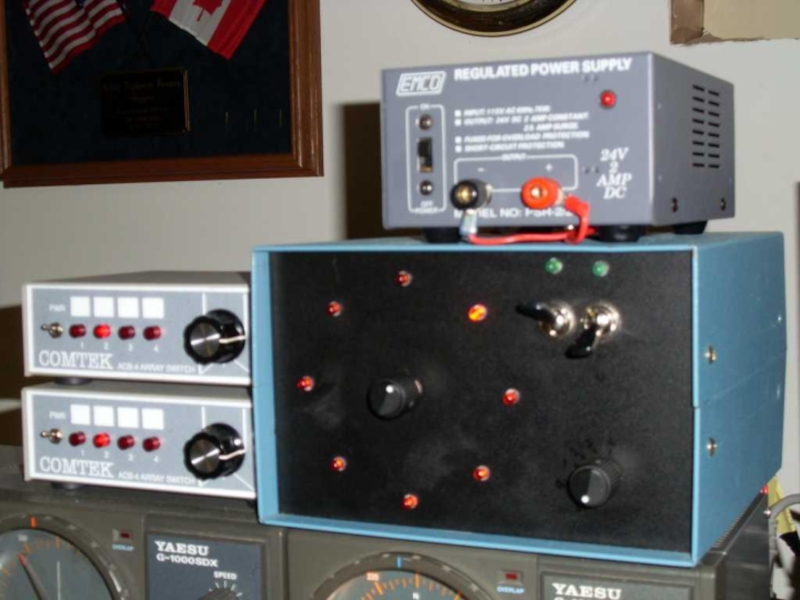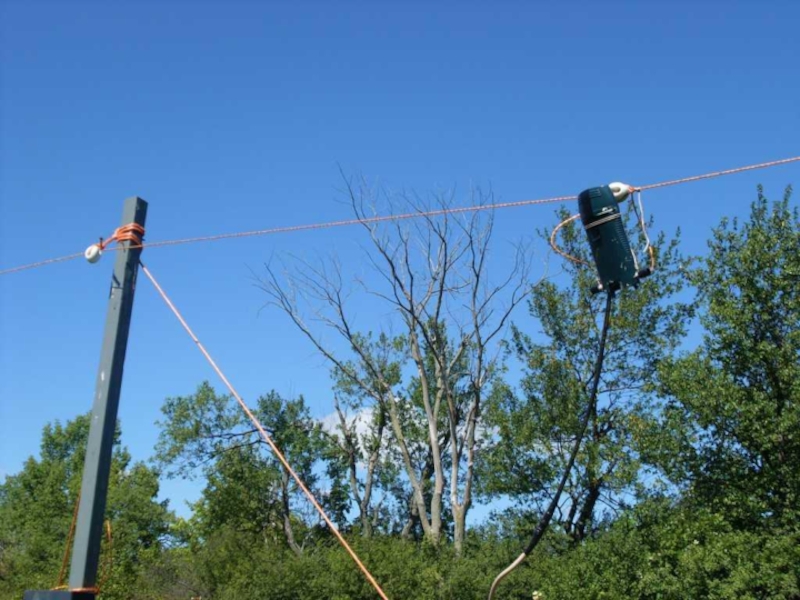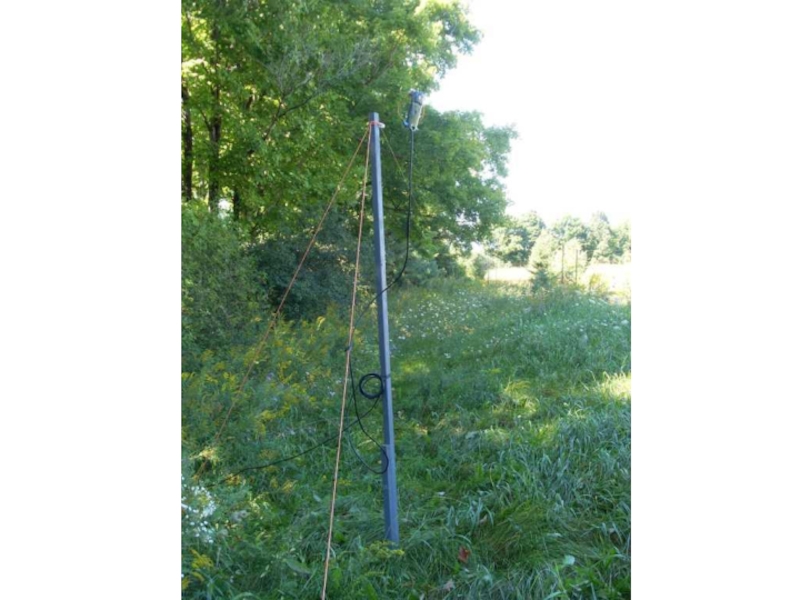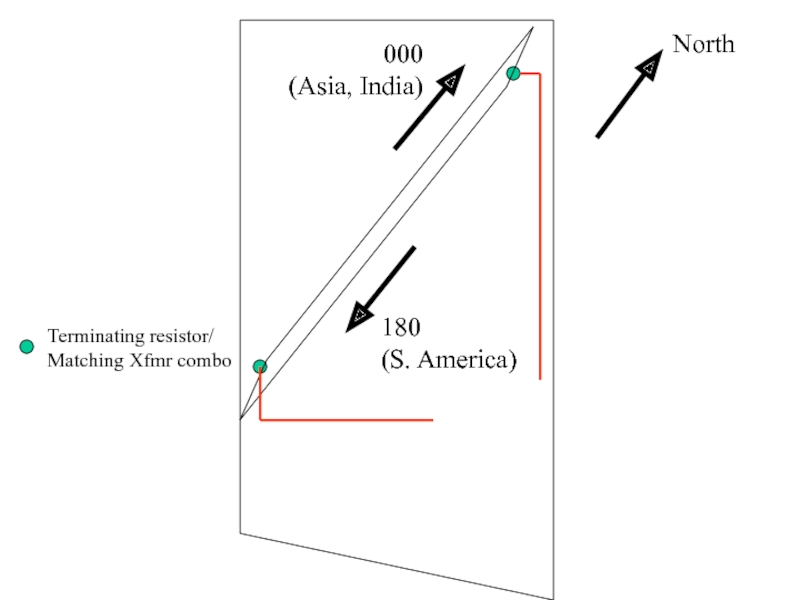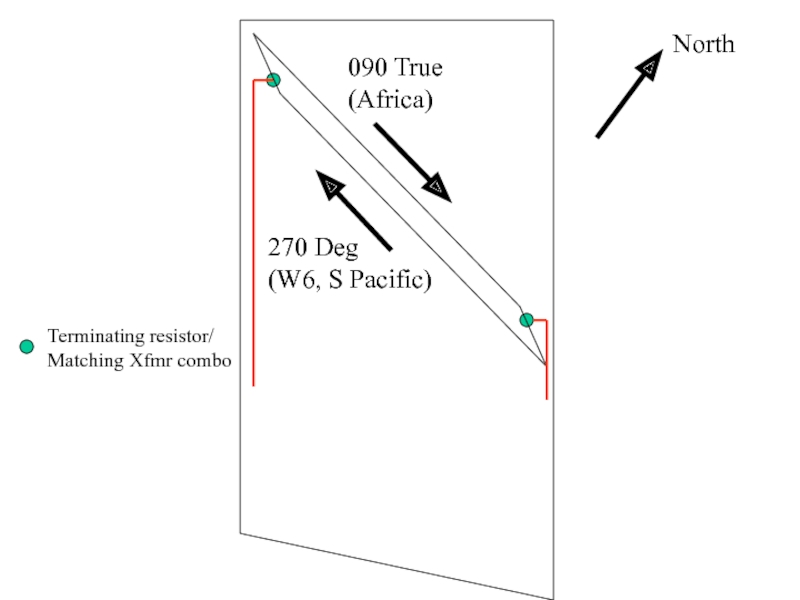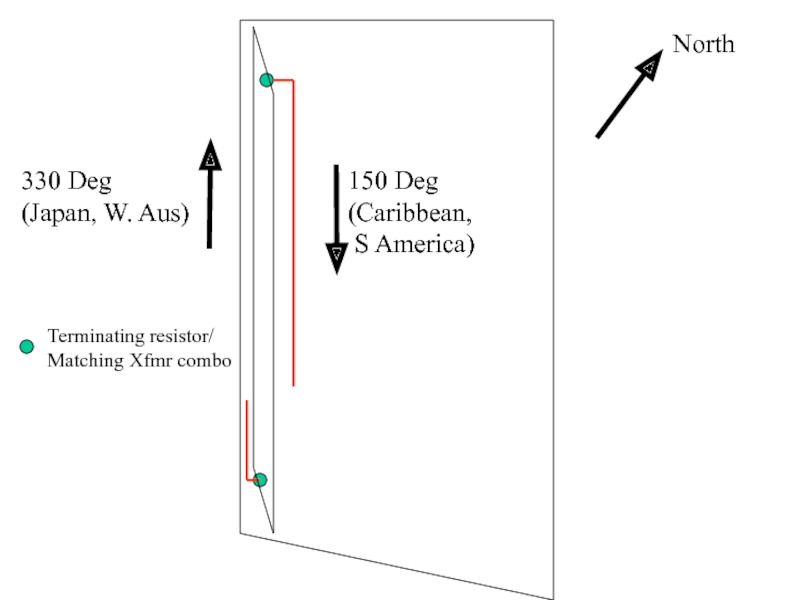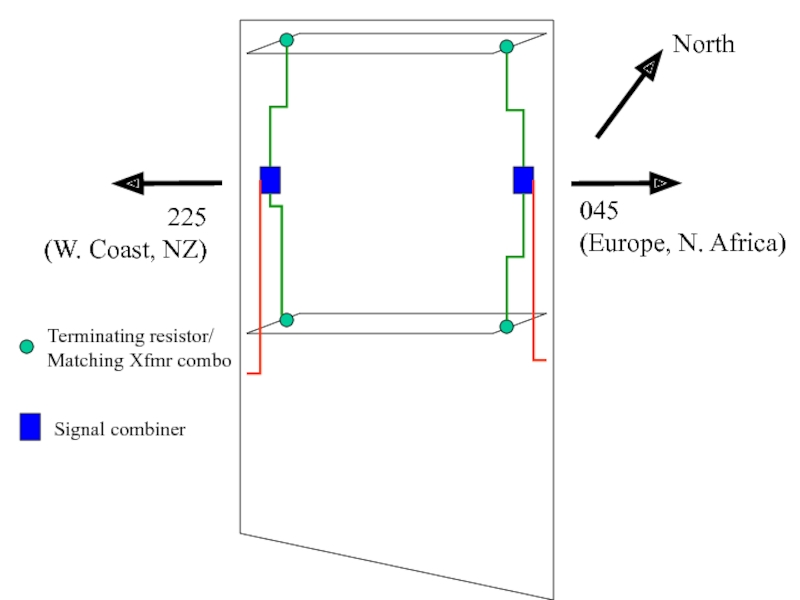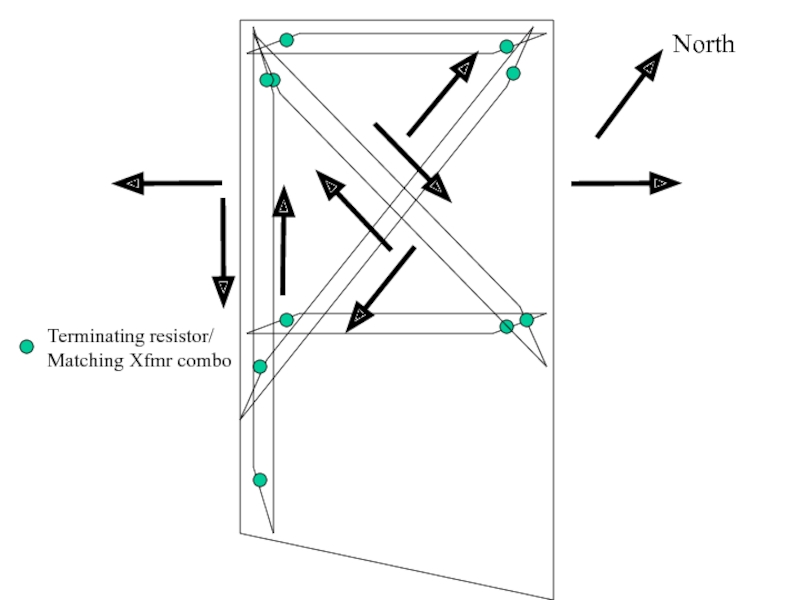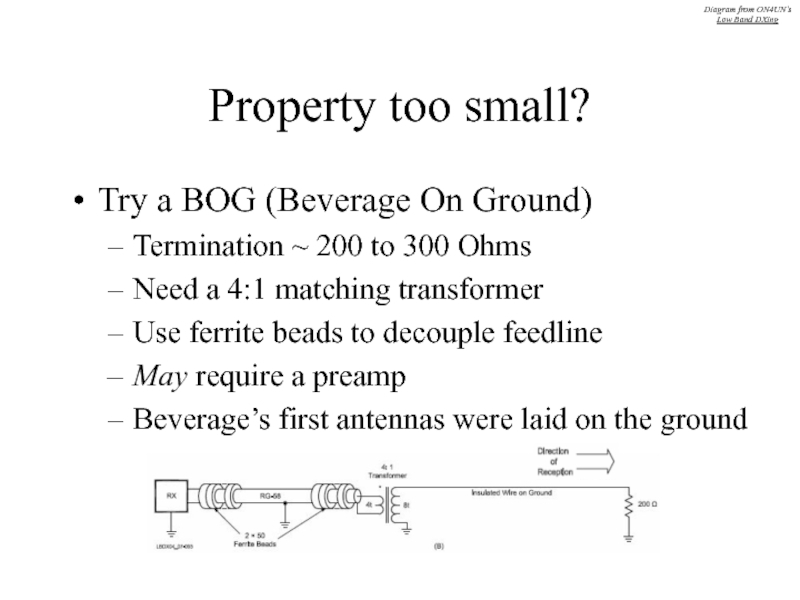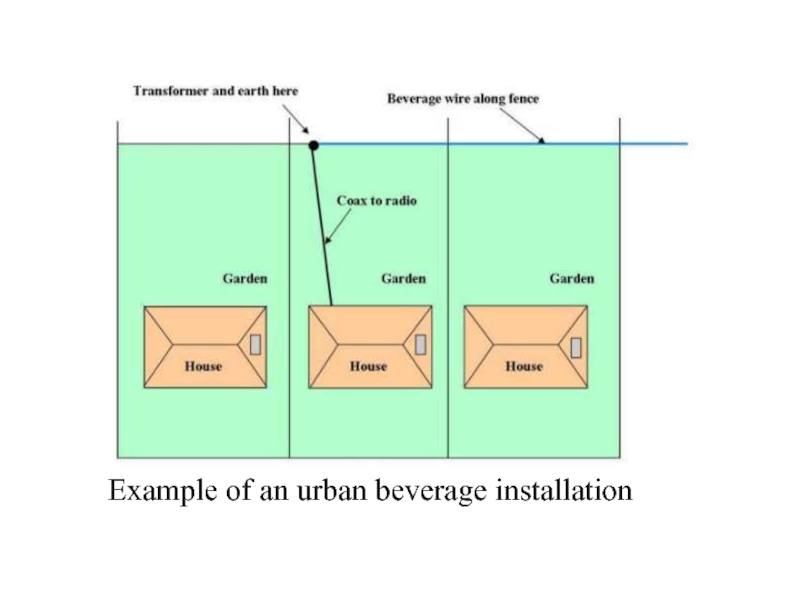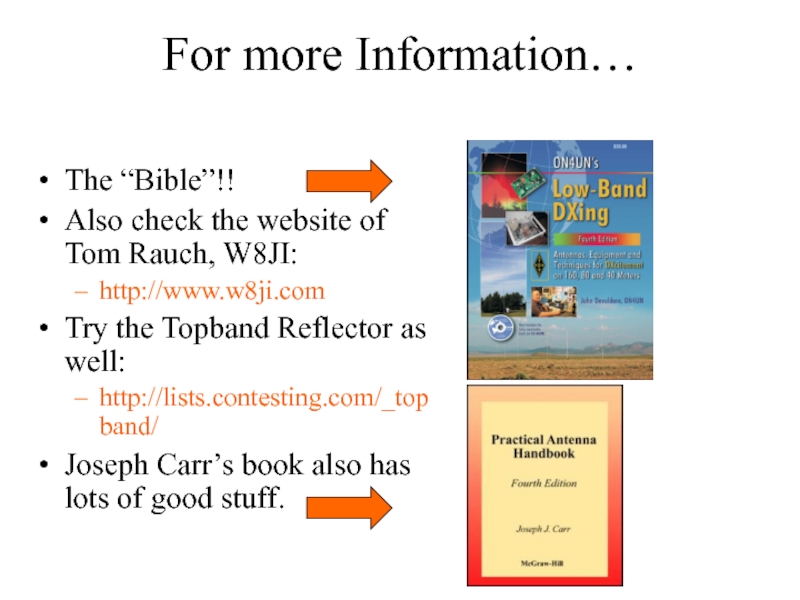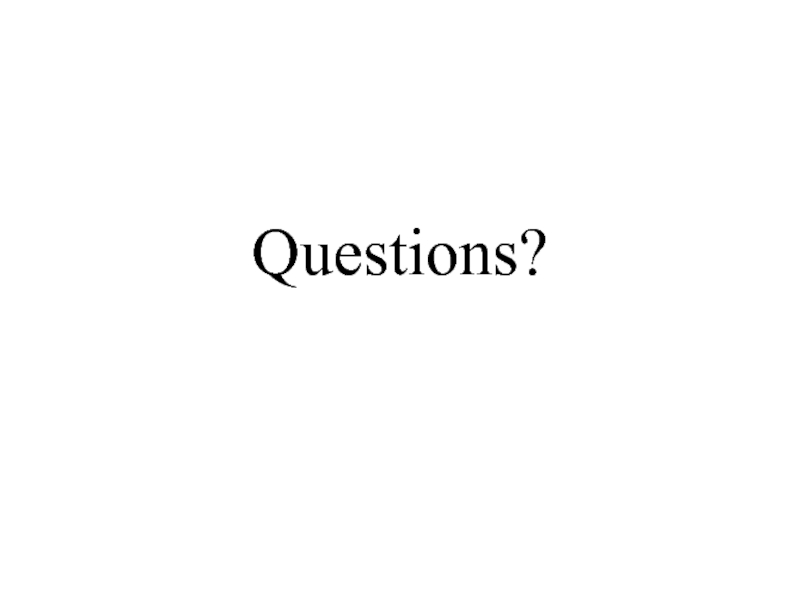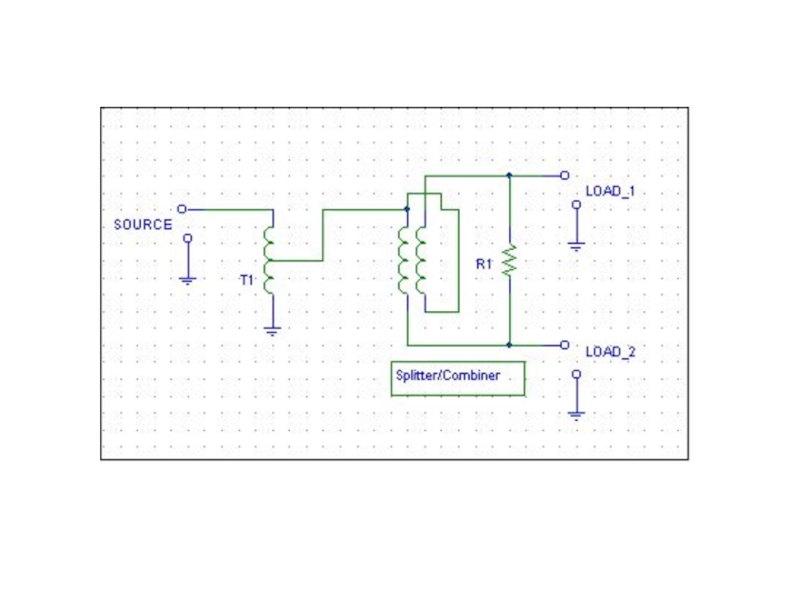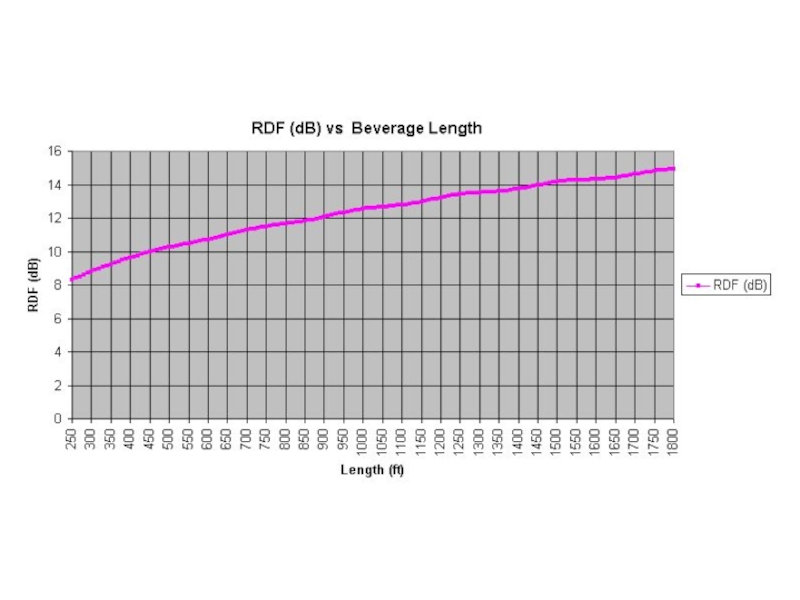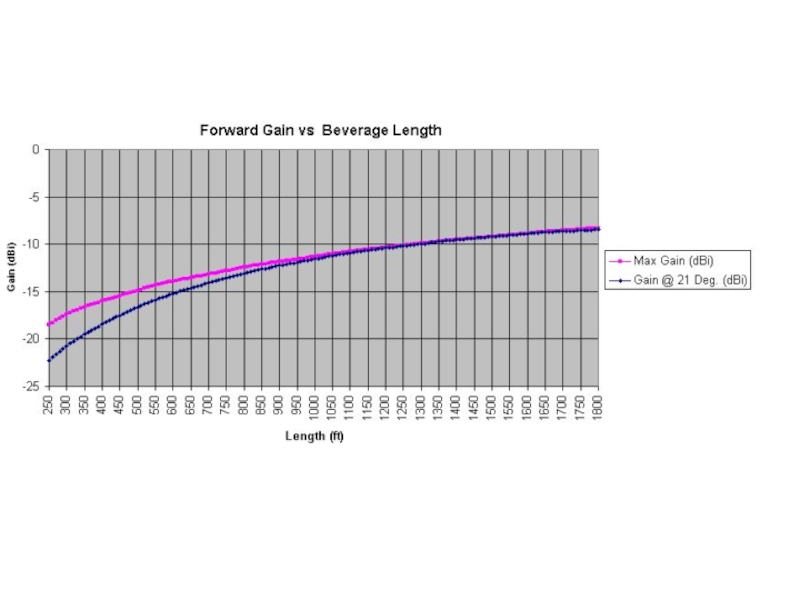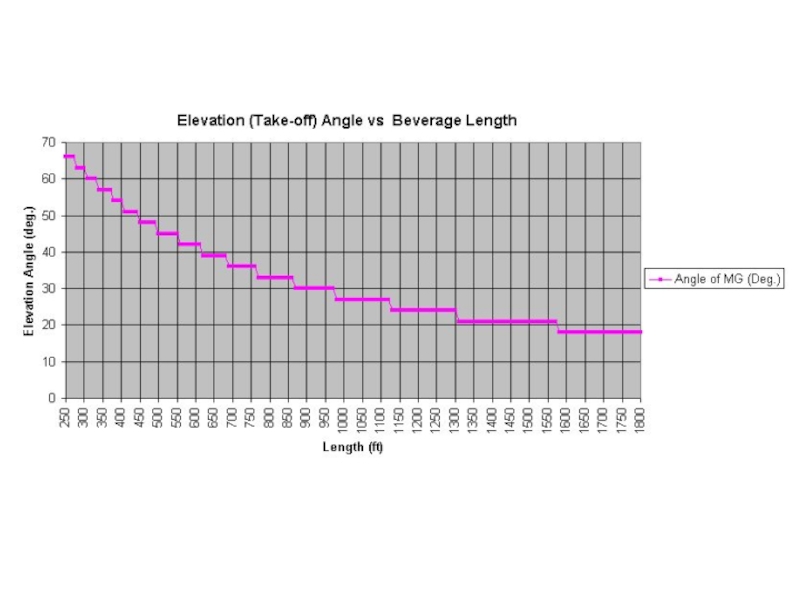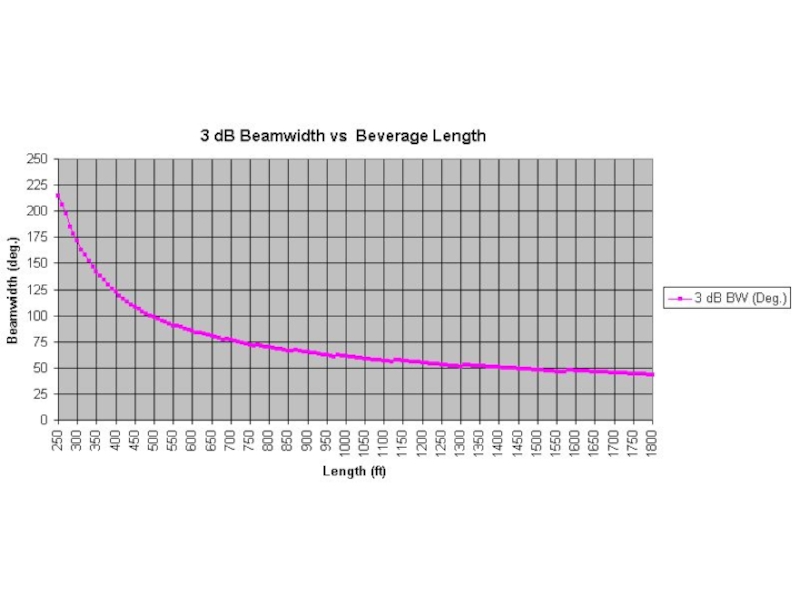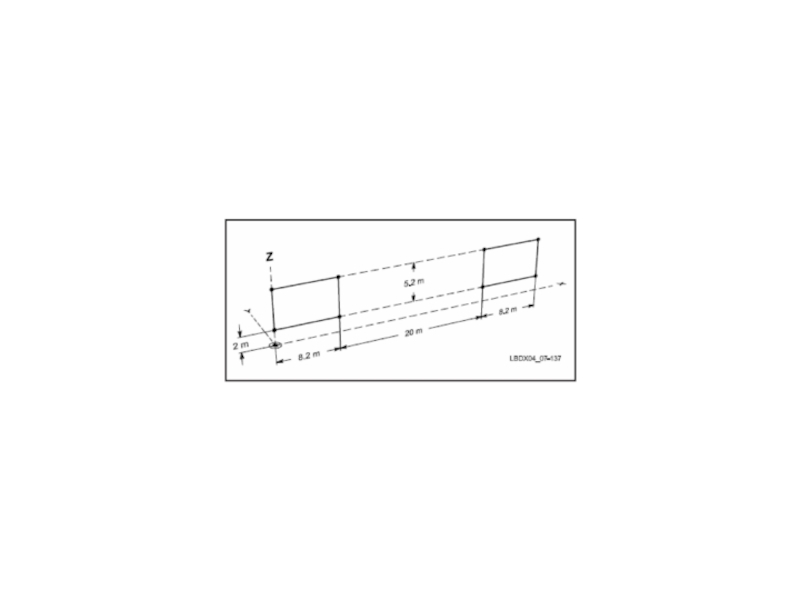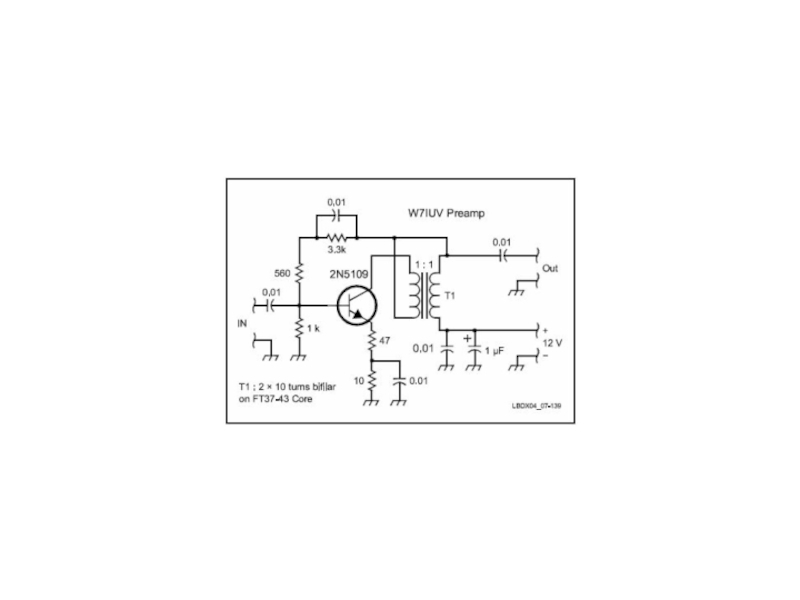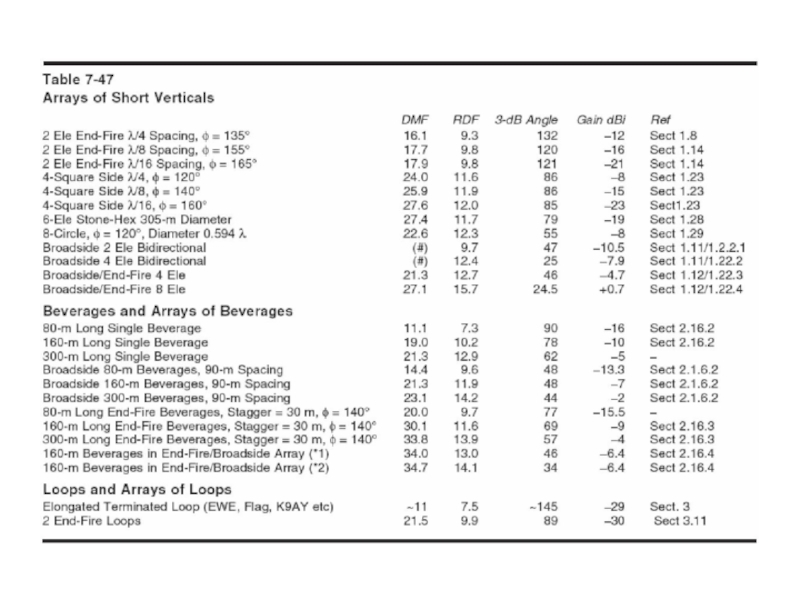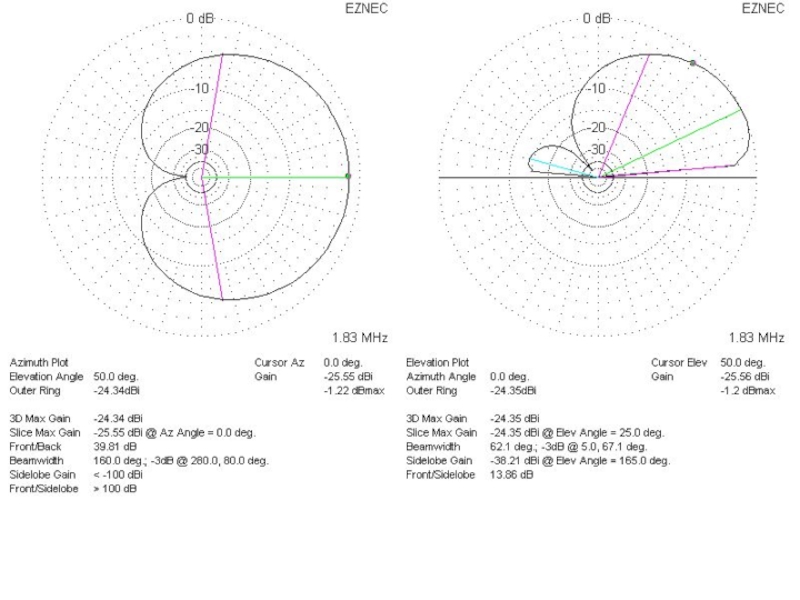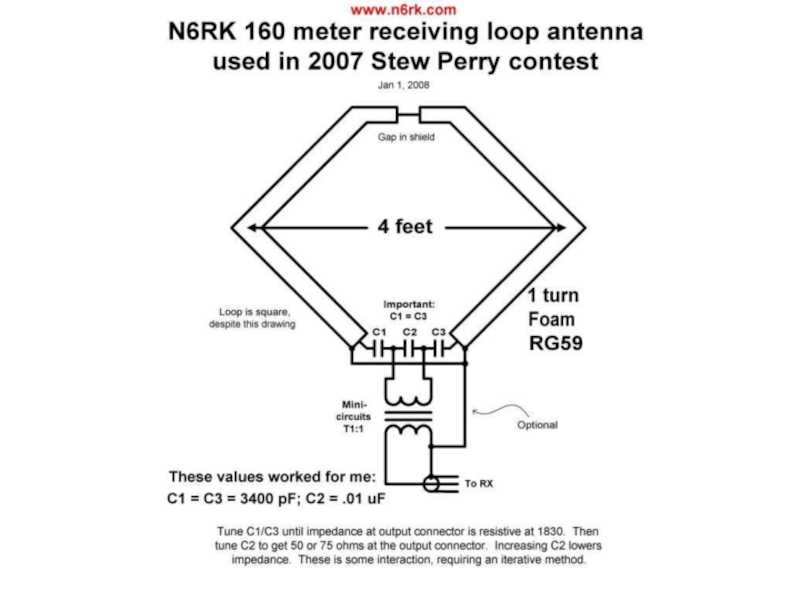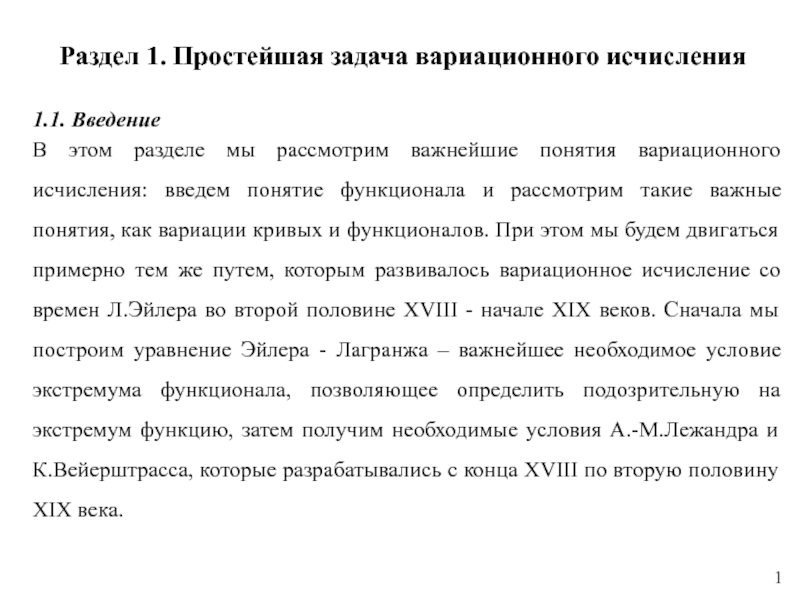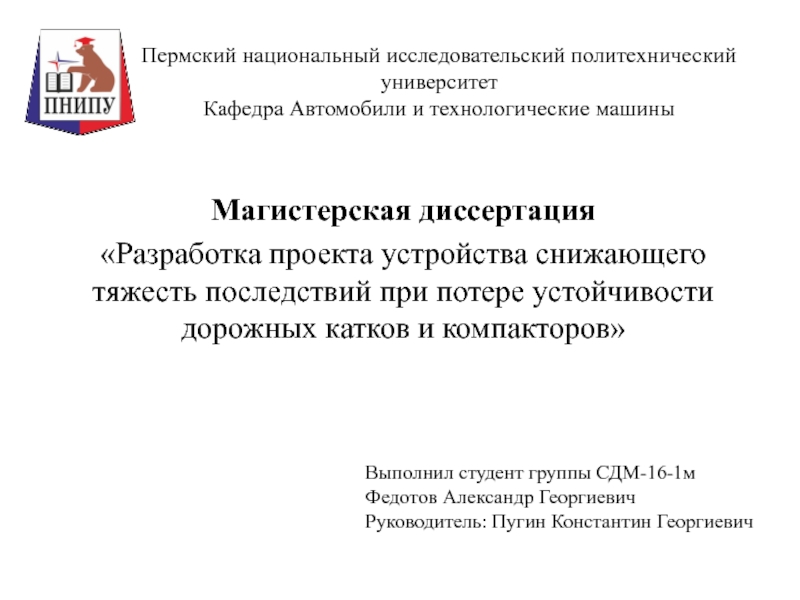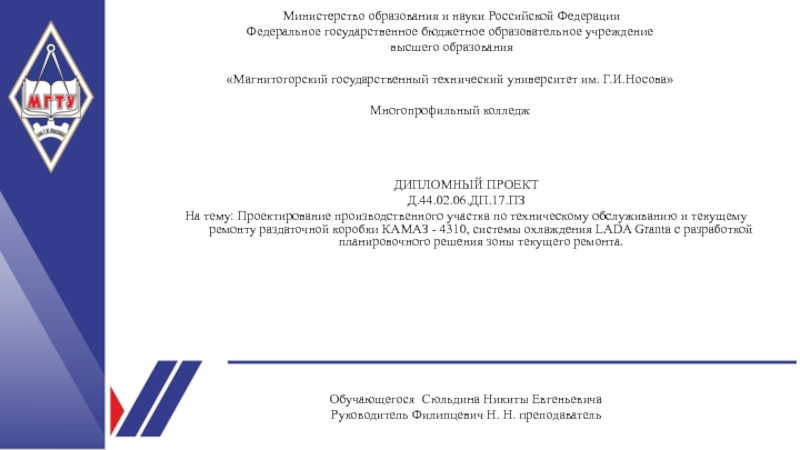Al Penney
VO1NO / VE3
- Главная
- Разное
- Дизайн
- Бизнес и предпринимательство
- Аналитика
- Образование
- Развлечения
- Красота и здоровье
- Финансы
- Государство
- Путешествия
- Спорт
- Недвижимость
- Армия
- Графика
- Культурология
- Еда и кулинария
- Лингвистика
- Английский язык
- Астрономия
- Алгебра
- Биология
- География
- Детские презентации
- Информатика
- История
- Литература
- Маркетинг
- Математика
- Медицина
- Менеджмент
- Музыка
- МХК
- Немецкий язык
- ОБЖ
- Обществознание
- Окружающий мир
- Педагогика
- Русский язык
- Технология
- Физика
- Философия
- Химия
- Шаблоны, картинки для презентаций
- Экология
- Экономика
- Юриспруденция
Low-Band Receive Antennas презентация
Содержание
- 1. Low-Band Receive Antennas
- 2. Tonight’s Topics… Introduction Receiving Basics RX Loops
- 4. Why do we need separate TX and
- 5. Antenna A Antenna B (+3dB gain vs
- 6. Single 720-foot Beverage. Two 720-foot Beverages. Spaced
- 7. Gain single Beverage: -11.2 dBi Gain
- 8. NO – nothing has been gained! The
- 9. How much Negative Gain can we tolerate
- 10. Noise The sum of all unidentified signals
- 11. Receive Loop Antennas
- 12. Max Max Null Null Diagram from Joseph Carr’s Practical Antenna Handbook
- 14. Normal loop in free space Nulls
- 15. Diagram from Joseph Carr’s Practical Antenna Handbook
- 16. Diagram from Joseph Carr’s Practical Antenna Handbook
- 17. Diagram from Joseph Carr’s Practical Antenna Handbook
- 18. Receive Loops Summary Pros Small, lightweight Easy
- 19. Elongated Terminated Loops Include Ewe, Flag, Pennant
- 20. Theory of Operation Despite the shape, actually
- 21. Ewe Antenna Diagram from ON4UN’s Low Band DXing
- 22. Ewe Antenna at KC4HW
- 23. Flag Antenna Diagram from ON4UN’s Low Band DXing
- 24. www.qsl.net/w7iuv/
- 25. Pennant Antenna Diagram from ON4UN’s Low Band DXing
- 26. Delta Ewe Antenna Diagram from ON4UN’s Low Band DXing
- 27. K9AY Antenna Diagram from ON4UN’s Low Band DXing
- 28. http://www.hard-core-dx.com/
- 29. http://www.hard-core-dx.com/
- 30. K9AY Switchbox Diagram from ON4UN’s Low Band DXing
- 31. K9AY Control Box Diagram from ON4UN’s Low Band DXing
- 32. Ground Diagram from ON4UN’s Low Band DXing
- 33. Photo from ON4UN’s Low Band DXing
- 34. Diagram from ON4UN’s Low Band DXing
- 35. Feeding Elongated Loops Impedances range from 500
- 36. Transformation Low-Z High-Z 500 Ω
- 37. Diagram from www.w8ji.com
- 38. Elongated Loop Summary Pros Small footprint Simplicity
- 39. The Beverage Antenna!
- 41. Diagram from Joseph Carr’s Practical Antenna Handbook
- 42. Influence of Length Following slide shows EZNEC
- 43. 710
- 45. How High? Not as critical as many
- 46. Ground Quality The better the ground, the
- 47. Gain
- 48. Wire Inefficient antenna anyway, so size not
- 49. Theoretical Surge Impedance Z = 138 log
- 50. Termination Resistor Should be non-inductive Antenna will
- 51. Photo from www.w8ji.com
- 52. Diagram from ON4UN’s Low Band DXing
- 53. Supports Metal, non-metallic – doesn’t matter as
- 55. Photo from ON4UN’s Low Band DXing
- 56. Photo from www.w8ji.com
- 57. Photo from www.w8ji.com
- 58. Photo from www.w8ji.com
- 59. Parallel and Crossing Beverages Separate parallel Beverages
- 60. Photo from ON4UN’s Low Band DXing
- 62. Matching the Beverage Antenna Several different core
- 63. Winding Binocular Cores Pri Sec Pri Z Sec Z
- 64. Coax Can use 50 or 75 Ohm
- 65. Grounds One 8-foot ground rod may suffice
- 66. Multiple Beverages from one Hub Diagram from ON4UN’s Low Band DXing
- 67. Two Directions from one Beverage Diagram from ON4UN’s Low Band DXing
- 68. Another Method… Diagram from ON4UN’s Low Band DXing
- 69. Phasing Beverage Antennas To improve directivity without
- 70. Broadside Phasing Narrows frontal lobe Front/Back remains
- 71. End-Fire Phasing Greatly improves Front/Back directivity Front
- 72. Photo from ON4UN’s Low Band DXing
- 73. Diagrams from ON4UN’s Low Band DXing Broadside
- 74. Crossfire Phasing Simple end-fire feed system
- 75. Beverage Antennas at VO1NO/VE3 5 acres near
- 79. North 000 (Asia, India) 180 (S. America) Terminating resistor/ Matching Xfmr combo
- 80. North 090 True (Africa) 270
- 81. North 150 Deg (Caribbean,
- 82. North
- 83. North
- 84. Property too small? Try a BOG (Beverage
- 85. Example of an urban beverage installation
- 86. For more Information… The “Bible”!! Also check
- 87. Questions?
Слайд 1Low-Band Receive Antennas
How to hear that great DX that you’re missing
Слайд 2Tonight’s Topics…
Introduction
Receiving Basics
RX Loops
Elongated Terminated Loops
EWE Antenna
Flag Antenna
Pennant Antenna
K9AY Loop
Beverages
Слайд 4Why do we need separate TX and RX antennas?
Because, they have
TX antennas need to deliver strongest possible signal into target area compared to other antennas.
Efficiency and gain are most important factors.
RX antennas need to have best Signal to Noise Ratio (SNR) – gain and efficiency are not necessary.
Слайд 5Antenna A
Antenna B
(+3dB gain vs Antenna A)
Is Antenna B a better
Antenna than Antenna A?
Diagrams from ON4UN’s
Low Band DXing
Слайд 6Single 720-foot Beverage.
Two 720-foot Beverages.
Spaced 70 feet apart.
Diagrams from ON4UN’s
Low Band
Слайд 7
Gain single Beverage: -11.2 dBi
Gain two Beverages (70-ft sp): -8.2 dBi
So,
But, has anything actually been gained in terms of Signal/Noise ratio?
Слайд 8NO – nothing has been gained!
The pattern is still practically identical
Front/Back
Front/Side is within 0.47dB
Unwanted noise is external to the antenna. Because the directivity of the two antenna systems is the same, the Signal/Noise ratio is exactly the same for both.
We must use Directivity when comparing RX Antennas, not gain.
Слайд 9How much Negative Gain can we tolerate with RX antennas?
Modern receivers
If you can easily hear an increase in background noise when switching from a dummy load to an RX antenna under quietest conditions, then gain is sufficient.
Minus10 to minus 20 dBi Gain is generally fine for most occasions.
Слайд 10Noise
The sum of all unidentified signals (thunderstorms, man-made, cosmic etc.).
Requires its
RX antennas reduce noise through:
Directivity
Null placement
Noise canceling devices
Height
Слайд 14
Normal loop in free space
Nulls “filled in” by nearby metal objects
Diagram
Practical Antenna Handbook
Слайд 18Receive Loops Summary
Pros
Small, lightweight
Easy to build
Sharp null in 2 directions
Cons
Poor sensitivity
Broad
Often next to noise source in shack
Receive loops can be a useful tool in some
situations, but are probably better suited for
SWL and BCB/LF Beacon DX’ing.
Слайд 19Elongated Terminated Loops
Include Ewe, Flag, Pennant and K9AY
Terminated loop produces a
Depth and angle of null depend on loop shape
Слайд 20Theory of Operation
Despite the shape, actually a pair of verticals
Feedline
Terminating resistor is equal to feedpoint impedance, and ensures equal current throughout
Thus, vertical elements have phase difference of 180 deg plus electrical length of connecting wires (slightly more than element spacing)
This gives the cardioid pattern
Terminating Resistor
Coax
Matching X’fmer
Direction of Reception
Слайд 35Feeding Elongated Loops
Impedances range from 500 Ohms in K9AY, to 950
Important characteristics:
Lowest possible capacitive coupling between primary and secondary windings.
Low loss, as signals are weak
Good SWR if you want to phase loops into an array of loops
Слайд 36
Transformation Low-Z High-Z
500 Ω to 75 Ω 2 passes (1
500 Ω to 50 Ω 2 passes (1 turn) 6 passes
950 Ω to 75 Ω 2 passes (1 turn) 7 passes
950 Ω to 50 Ω 2 passes (1 turn) 9 passes
I use binocular cores made from
#73 material. Separate windings
ensure low coupling, and good
balance. Other designs are
possible.
Diagram from ON4UN’s
Low Band DXing
Слайд 38Elongated Loop Summary
Pros
Small footprint
Simplicity
Can be phased to improve performance
Much better than
Cons
Insensitive, may require a preamp
Directivity not as good as a Beverage
Feedline prone to noise pickup
Although not as good as Beverage antennas,
Elongated Loops offer good performance
for people who don’t have much room.
Слайд 42Influence of Length
Following slide shows EZNEC results for a Beverage with
2 meters high
Over good ground
600 Ohm termination
0.55 to 4.4 wavelength
160 M band
Слайд 43
710 M
-4.0 dBi
4.4 wl
535 M
-4.7 dBi
3.3 wl
353 M
-6.3 dBi
2.2 wl
268 M
-7.6
1.68 wl
176 M
-9.9 dBi
1.1 wl
89 M
-14.3 dBi
.55 wl
Diagram from ON4UN’s
Low Band DXing
Слайд 45How High?
Not as critical as many think
General rule:
Higher Beverages produce higher
Higher Beverages have larger side-lobes
Higher Beverages have a higher elevation angle
Higher Beverages have a wider 3-dB forward lobe
Laying on ground to 6 meters high is acceptable
1.5 x Antler Height is good idea!
2.5 meters is a good compromise
Слайд 46Ground Quality
The better the ground, the lower the output
Ground quality has
The poorer the ground, the less pronounced the nulls between the different lobes
Directivity remains almost constant
Beverage does not work well over salt water
Слайд 48Wire
Inefficient antenna anyway, so size not critical as long as it
Insulated, not insulated – doesn’t matter
Pre-stretch soft-drawn copper wire
Copper-clad and aluminum wire also okay
Слайд 49Theoretical Surge Impedance
Z = 138 log
4h
d
Where:
h = height of wire
d
Слайд 50Termination Resistor
Should be non-inductive
Antenna will pick up TX power and lightning
Metal Film and Carbon Film cannot handle surges
Use Carbon Composition
Use a Spark Gap
Photo from ON4UN’s
Low Band DXing
Слайд 53Supports
Metal, non-metallic – doesn’t matter as long as antenna is insulated
Poles,
Do not wrap wire around an insulator
Try to keep it straight and level, but minor variations are okay
Слайд 59Parallel and Crossing Beverages
Separate parallel Beverages by distance equal to their
Separate by at least 10 cm when crossing
Do not run close to parallel conductors (fences, telephone poles etc.)
Слайд 62Matching the Beverage Antenna
Several different core material/turns combinations available
Separate primary/secondary windings
I prefer Type 73 Binocular Cores as recommended by W8JI
Слайд 63
Winding Binocular Cores
Pri Sec Pri Z Sec Z
Passes Passes Ohm Ohm
4 10 75 450
6 16 75 533
4 12 50 450
6 20 50 550
Note: Using Fair-Rite 2873000202
Binocular Cores (1 turn
Diagram from ON4UN’s
Low Band DXing
Слайд 64Coax
Can use 50 or 75 Ohm cable
I prefer 75 Ohm cable
Works
Cheap!
Easy to attach connectors in the field
Easily identifiable as part of RX system – will not accidentally transmit into it
Did I mention that it is cheap?
Слайд 65Grounds
One 8-foot ground rod may suffice
Will probably need two or more
Can supplement it with a number of short radials to form capacitance hat to earth
On coax end of antenna, do not ground the coax braid
Ensure the coax braid ground is no closer than 5 meters to the ground attached to the transformer
Слайд 69Phasing Beverage Antennas
To improve directivity without using long antennas, can phase
Two methods:
Broadside
End-Fire (or Staggered)
Each has its own advantages
Слайд 70Broadside Phasing
Narrows frontal lobe
Front/Back remains the same
Fed in phase
Multiband
Require wide spacing
0.5
0.67 wl excellent!
To RX
Splitter
Coax
Coax
Beverage
Beverage
0.5 to 0.67 wavelength
RX Direction
Слайд 71End-Fire Phasing
Greatly improves Front/Back directivity
Front lobe remains much the same
Spacing 5
Stagger NMT 0.5 wl
20 m for 40 – 160m ant
30 m if only 80 – 160m
Diagram from ON4UN’s
Low Band DXing
Слайд 73Diagrams from ON4UN’s
Low Band DXing
Broadside Phasing
End-Fire Phasing
Diagrams from ON4UN’s
Low Band DXing
Слайд 74Crossfire Phasing
Simple end-fire feed system developed by W8JI
Usable over several octaves
Termination
16:1 matching transformer used (900 Ohms)
(X – S)/2 = Y2
Y1 = X – Y2
Diagram from ON4UN’s
Low Band DXing
Слайд 75Beverage Antennas at VO1NO/VE3
5 acres near Merrickville
Dimensions ~ 650 x 320
8 directions using end-fire phased Beverages
Control Box in shack, with 3 switchboxes in field
Слайд 81North
150 Deg
(Caribbean,
S America)
330 Deg
(Japan, W. Aus)
Terminating resistor/
Matching Xfmr combo
Слайд 82North
045
(Europe, N. Africa)
225
(W. Coast, NZ)
Terminating resistor/
Matching Xfmr combo
Signal combiner
Слайд 84Property too small?
Try a BOG (Beverage On Ground)
Termination ~ 200 to
Need a 4:1 matching transformer
Use ferrite beads to decouple feedline
May require a preamp
Beverage’s first antennas were laid on the ground
Diagram from ON4UN’s
Low Band DXing
Слайд 86For more Information…
The “Bible”!!
Also check the website of Tom Rauch, W8JI:
http://www.w8ji.com
Try
http://lists.contesting.com/_topband/
Joseph Carr’s book also has lots of good stuff.
